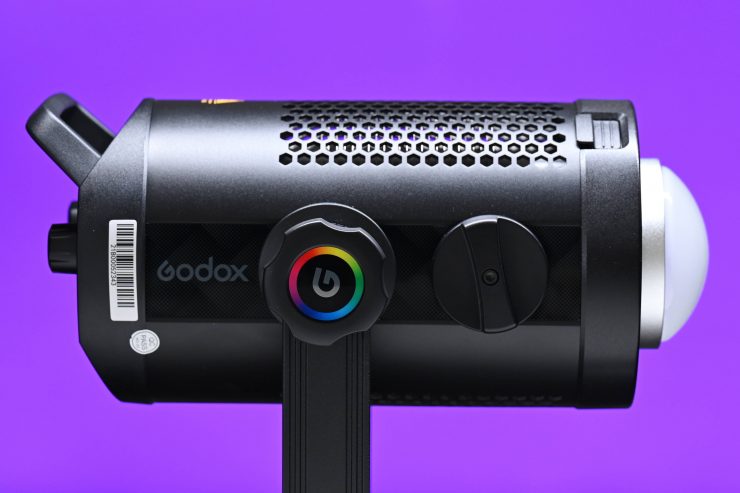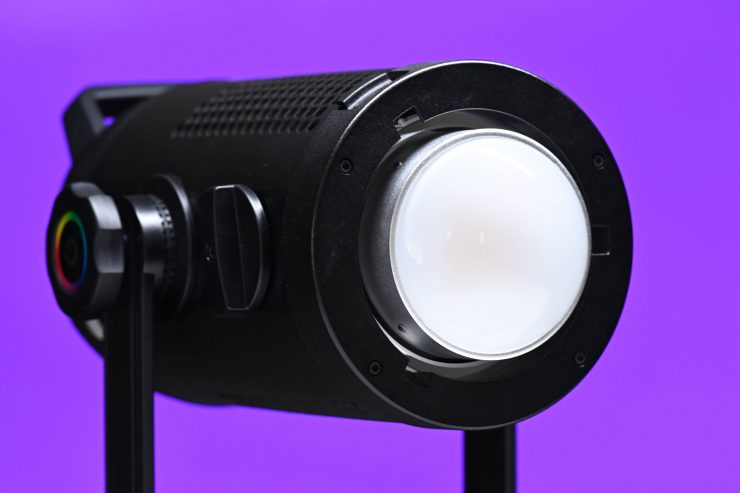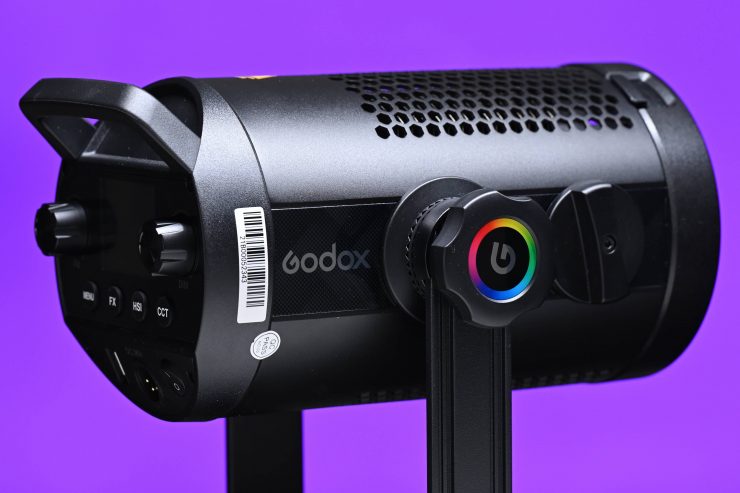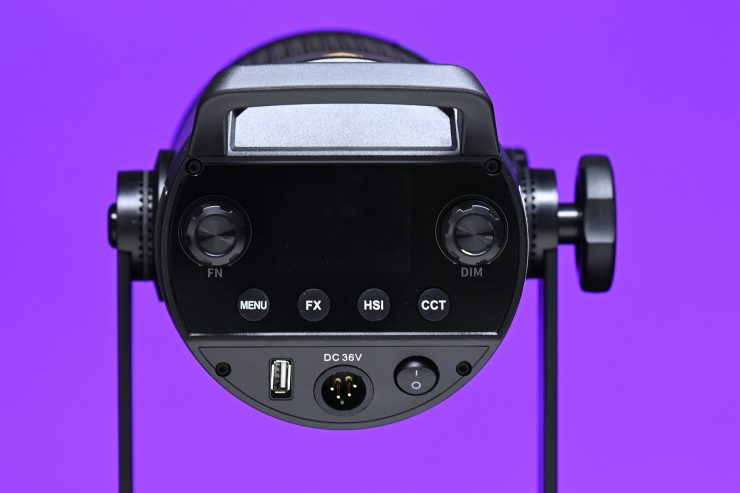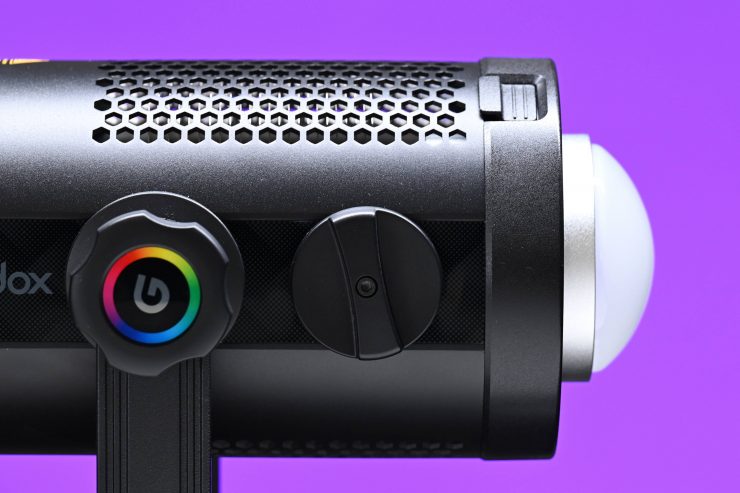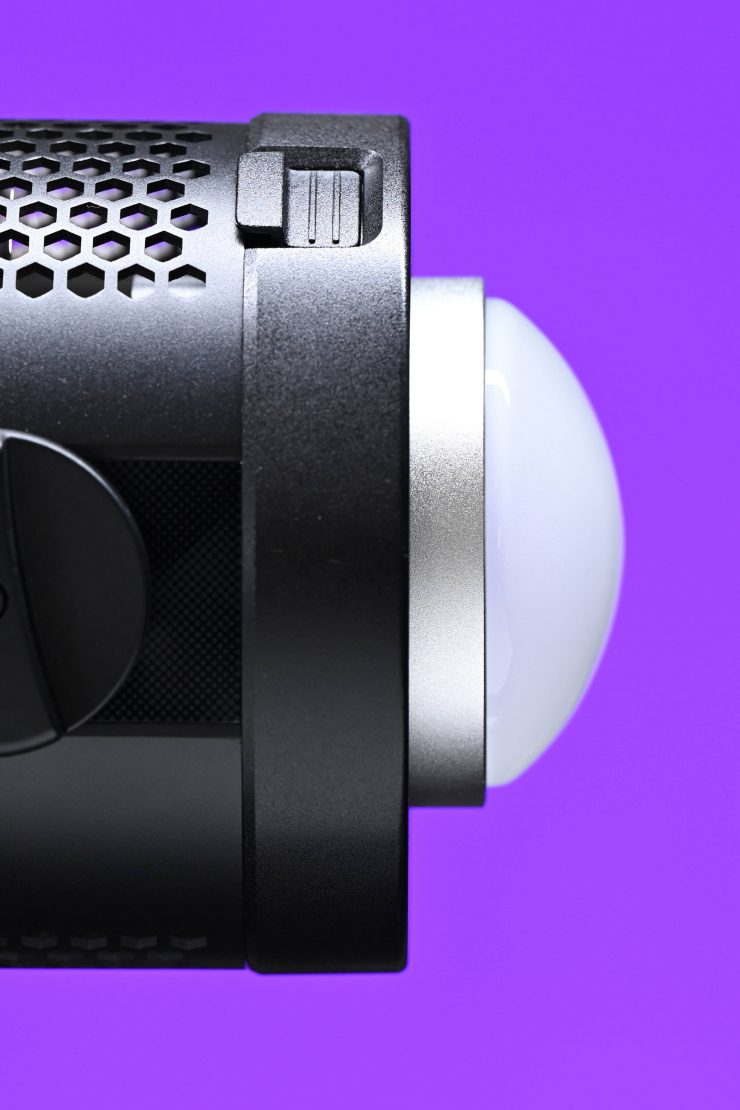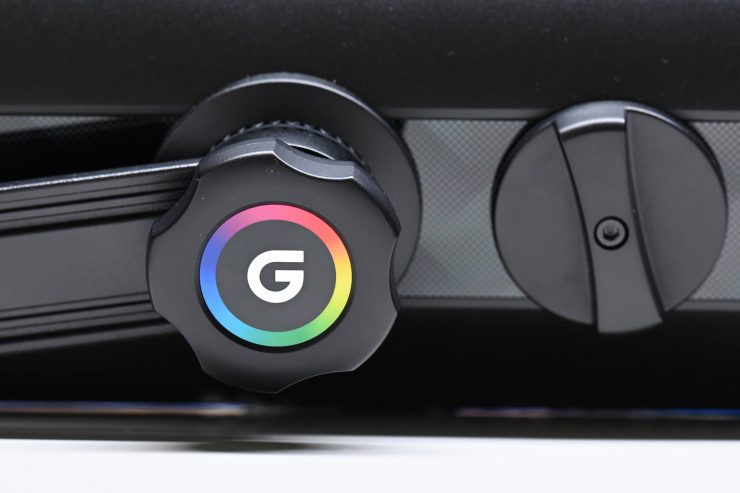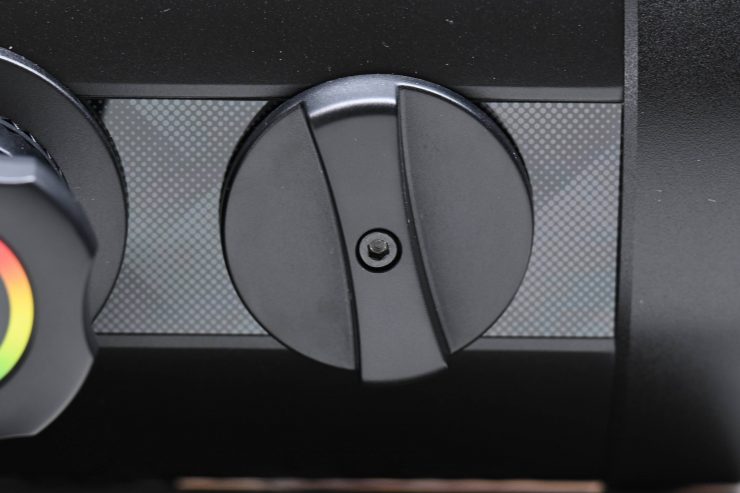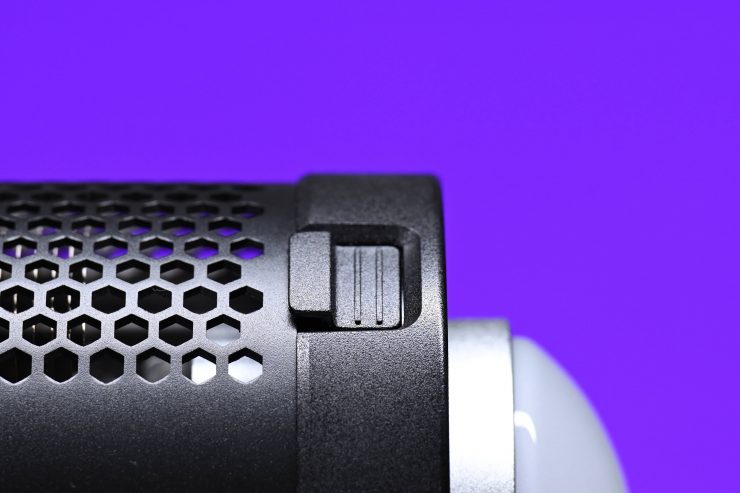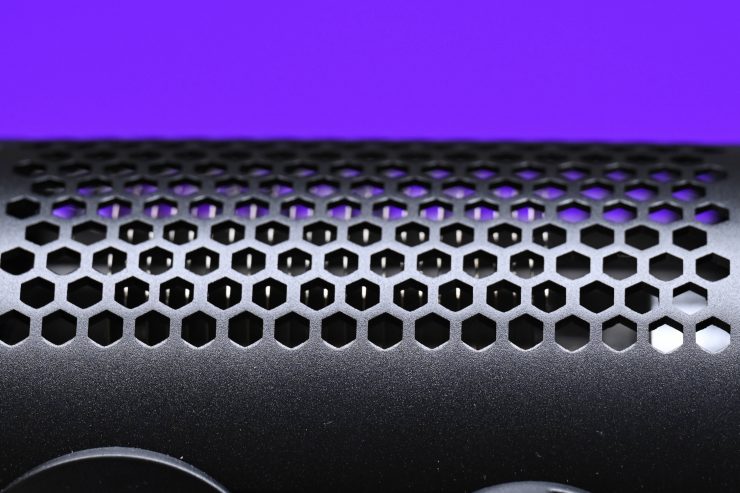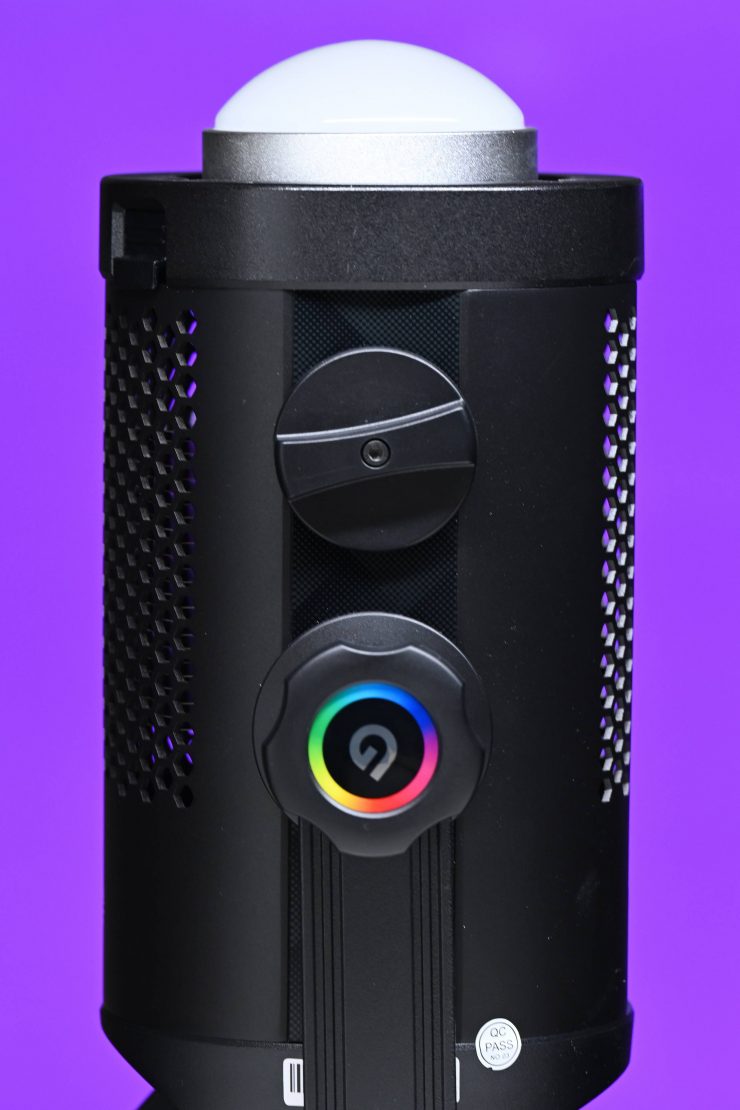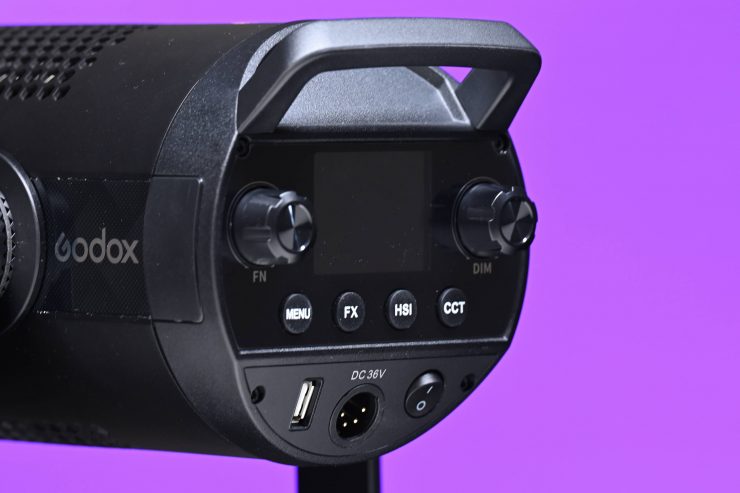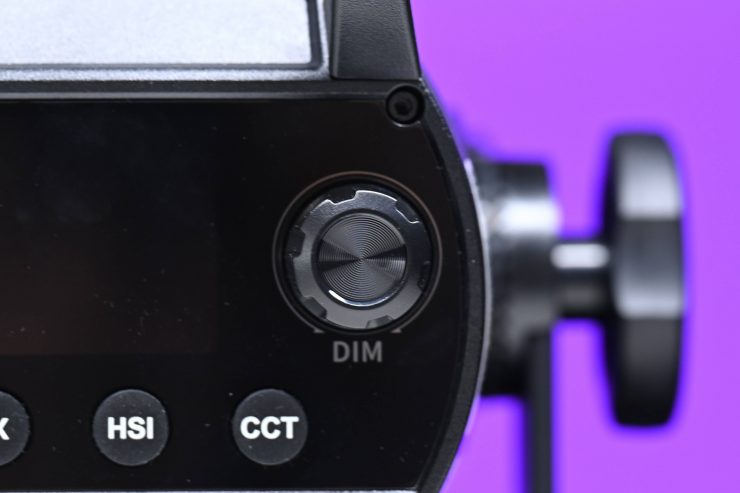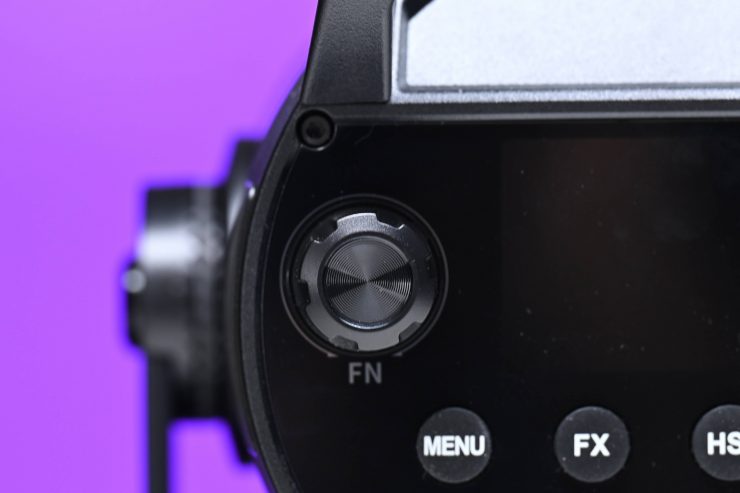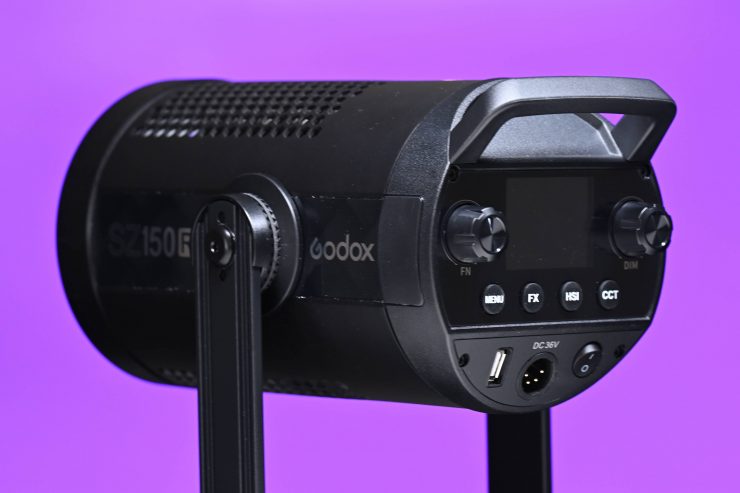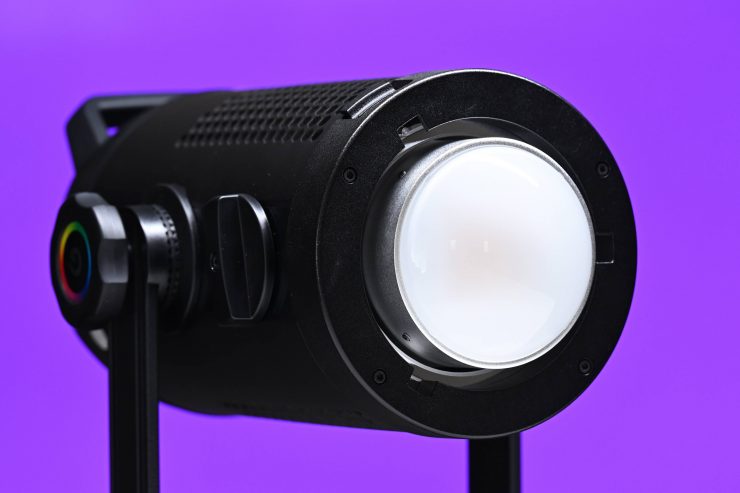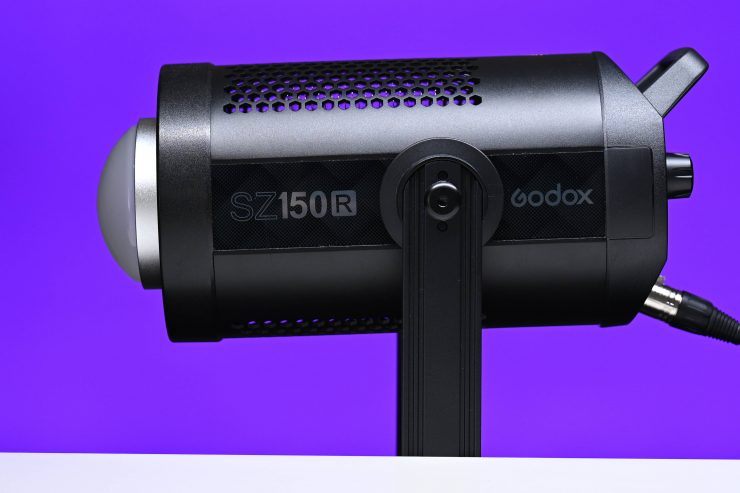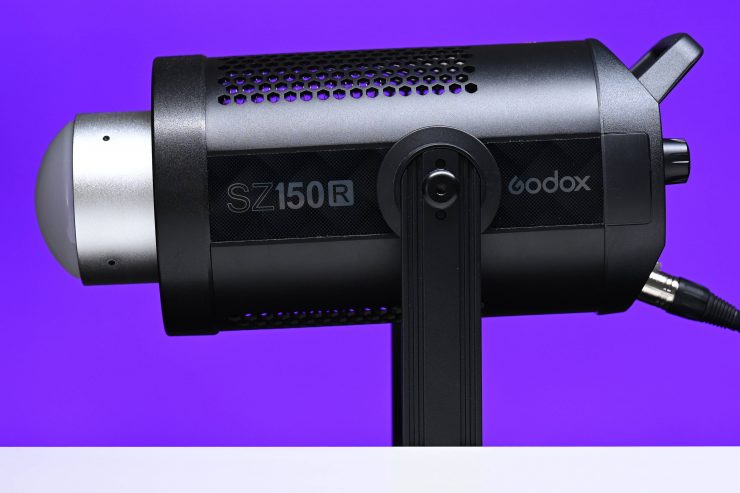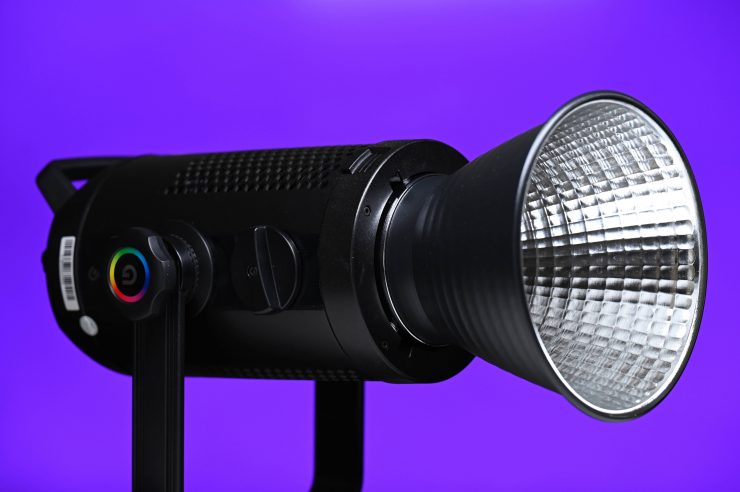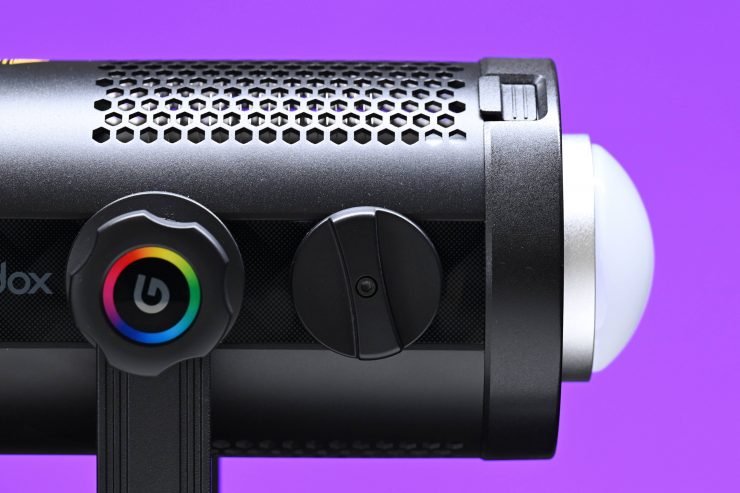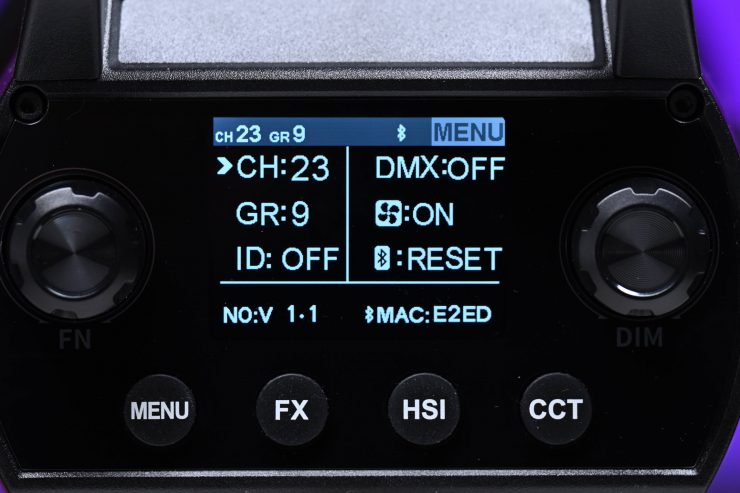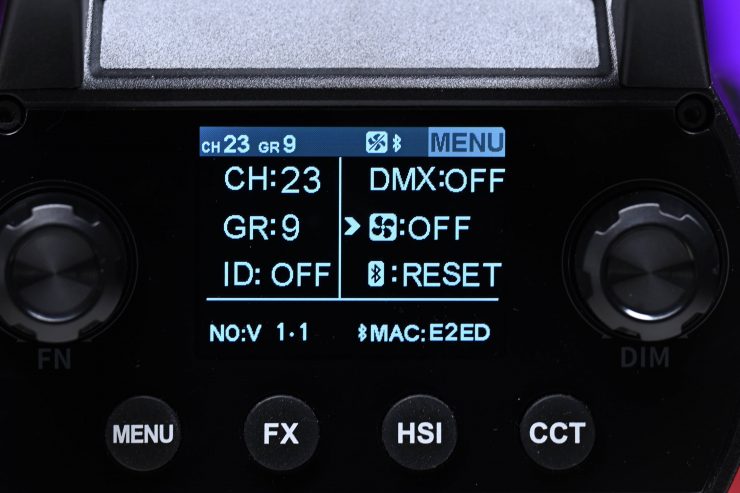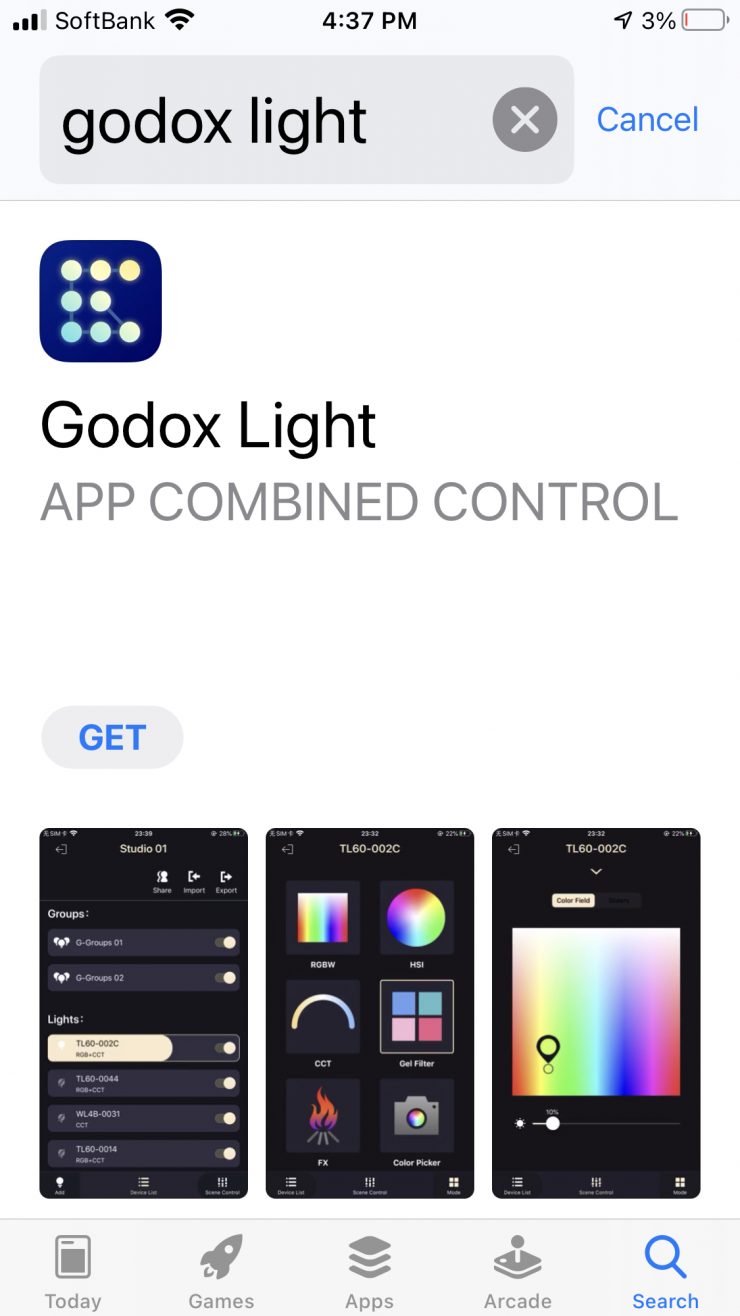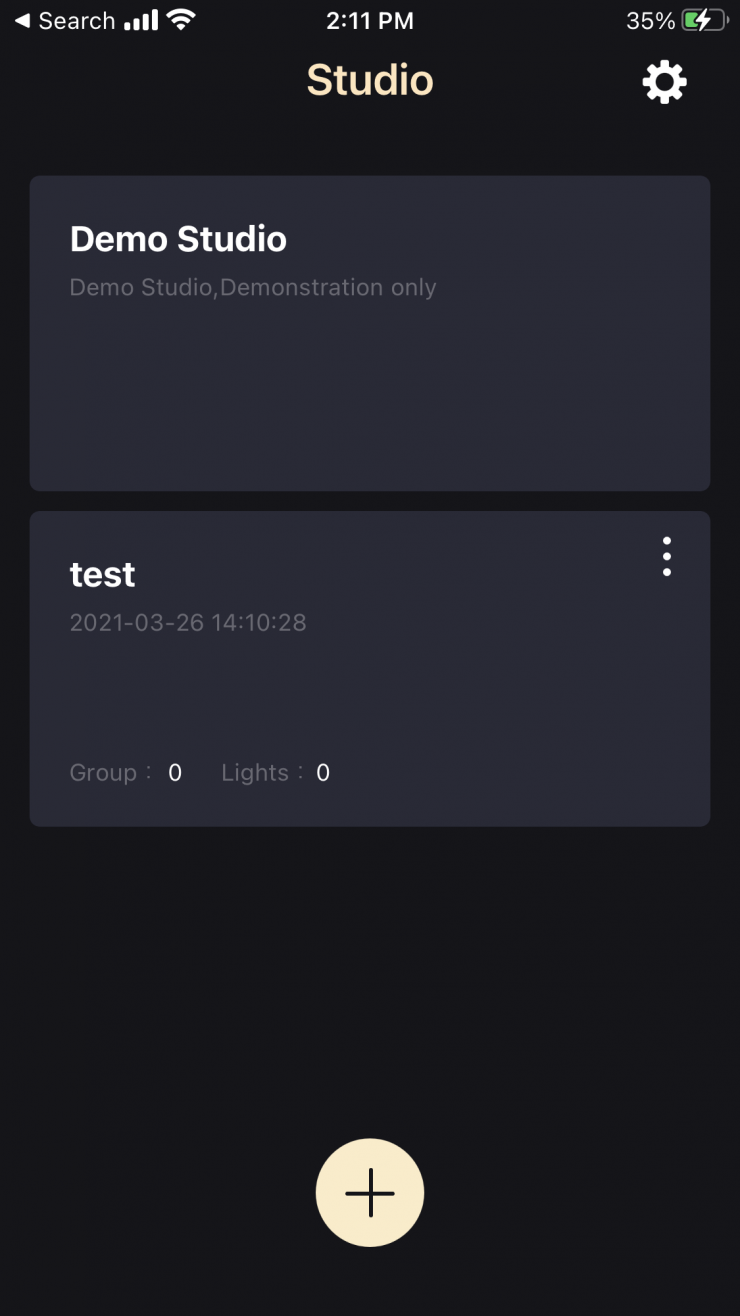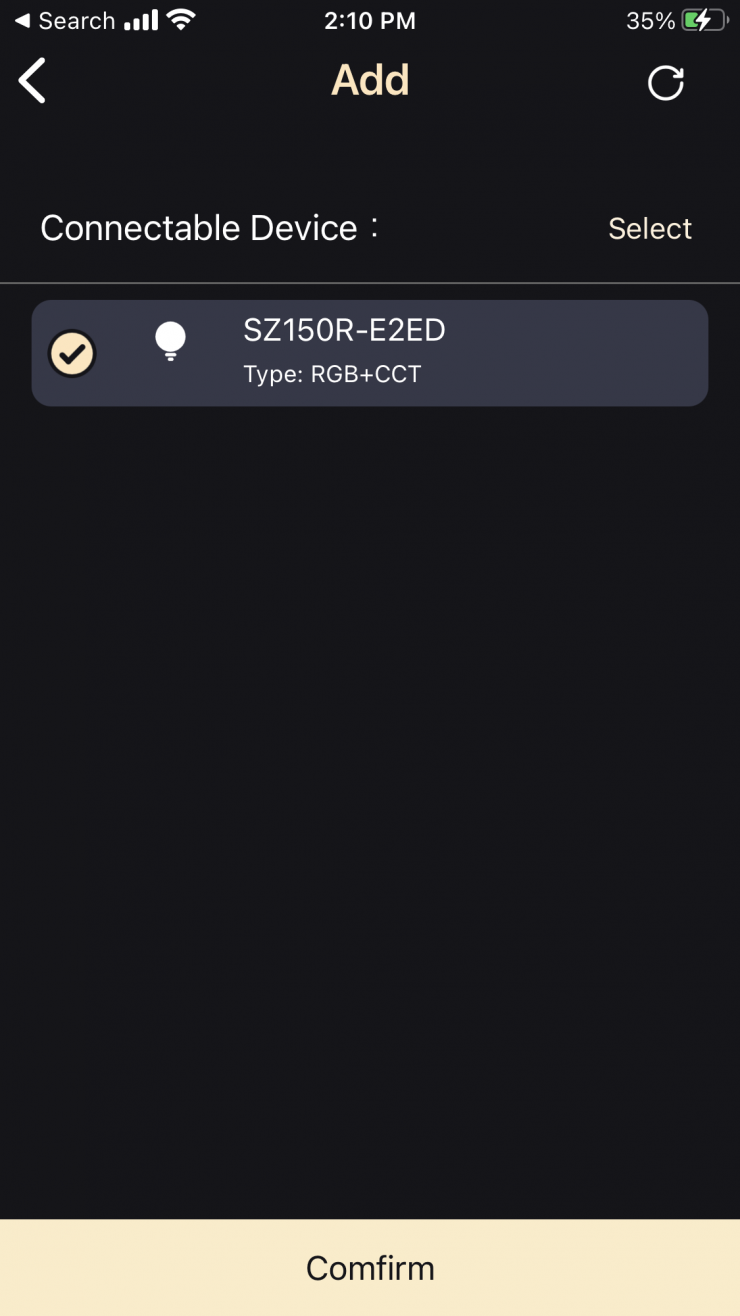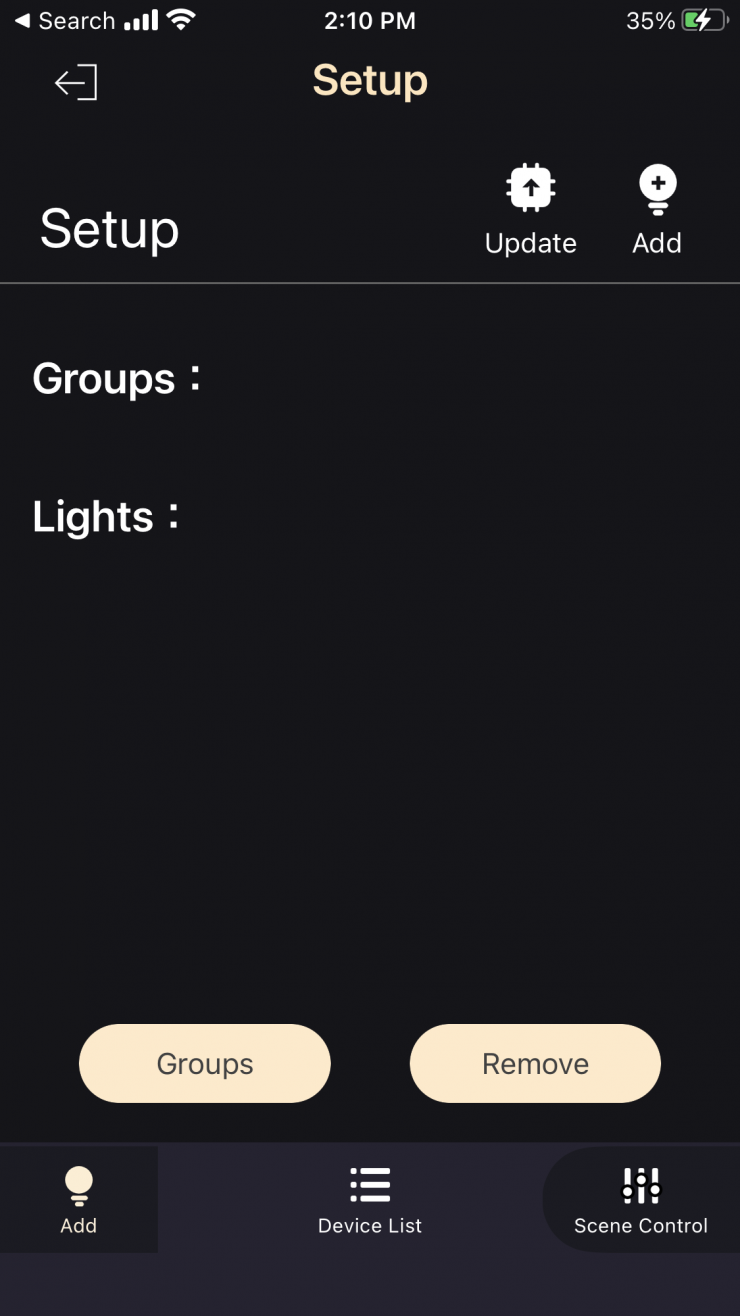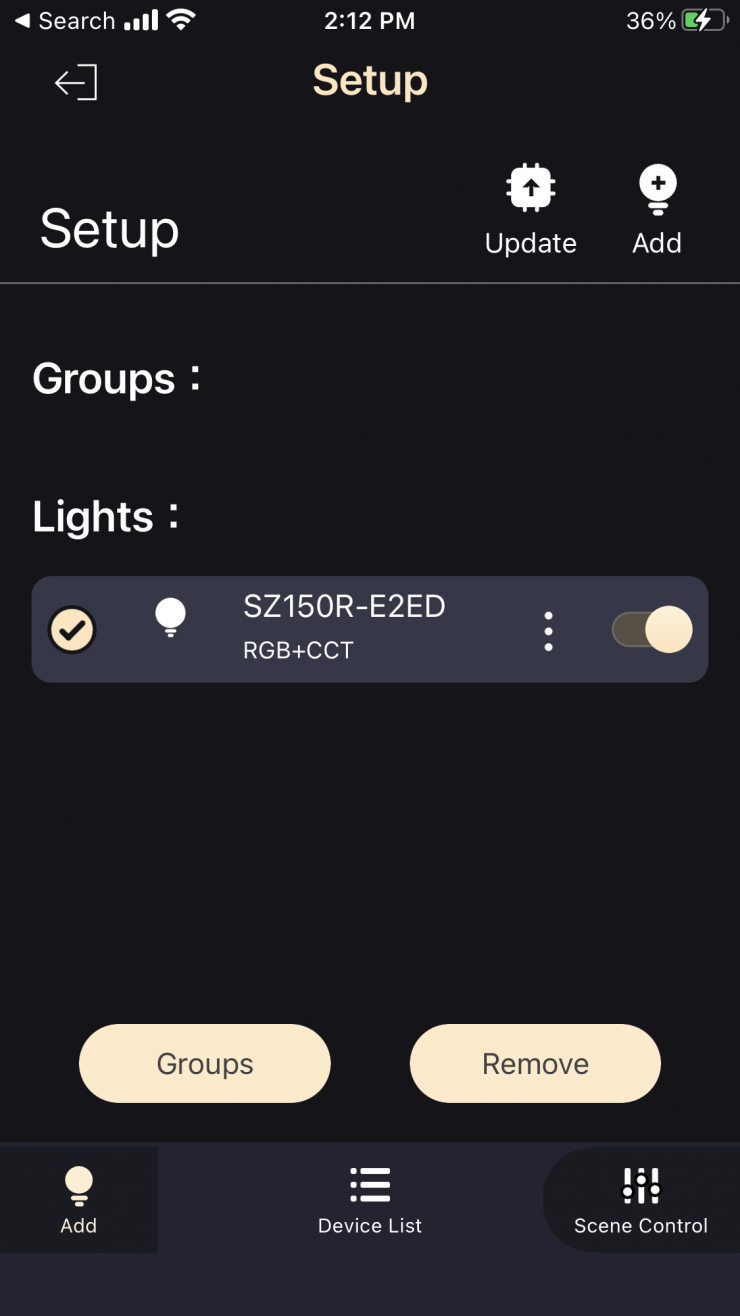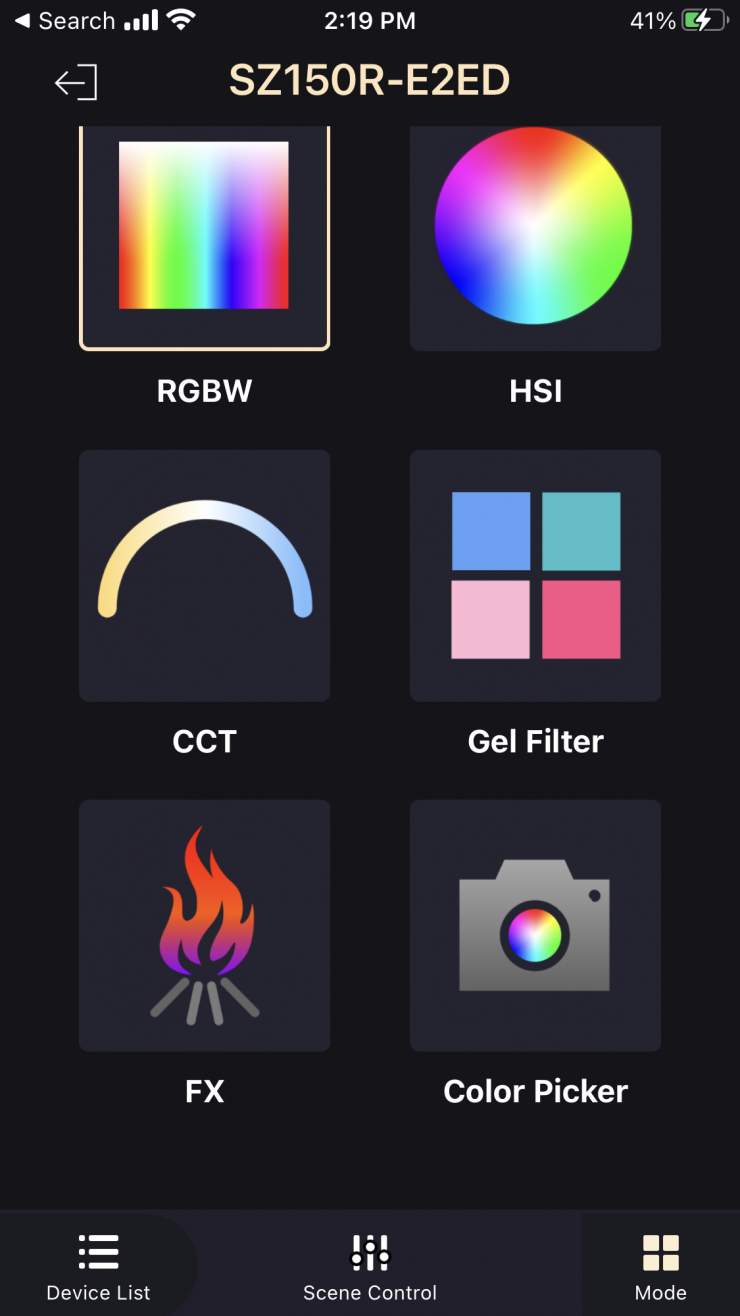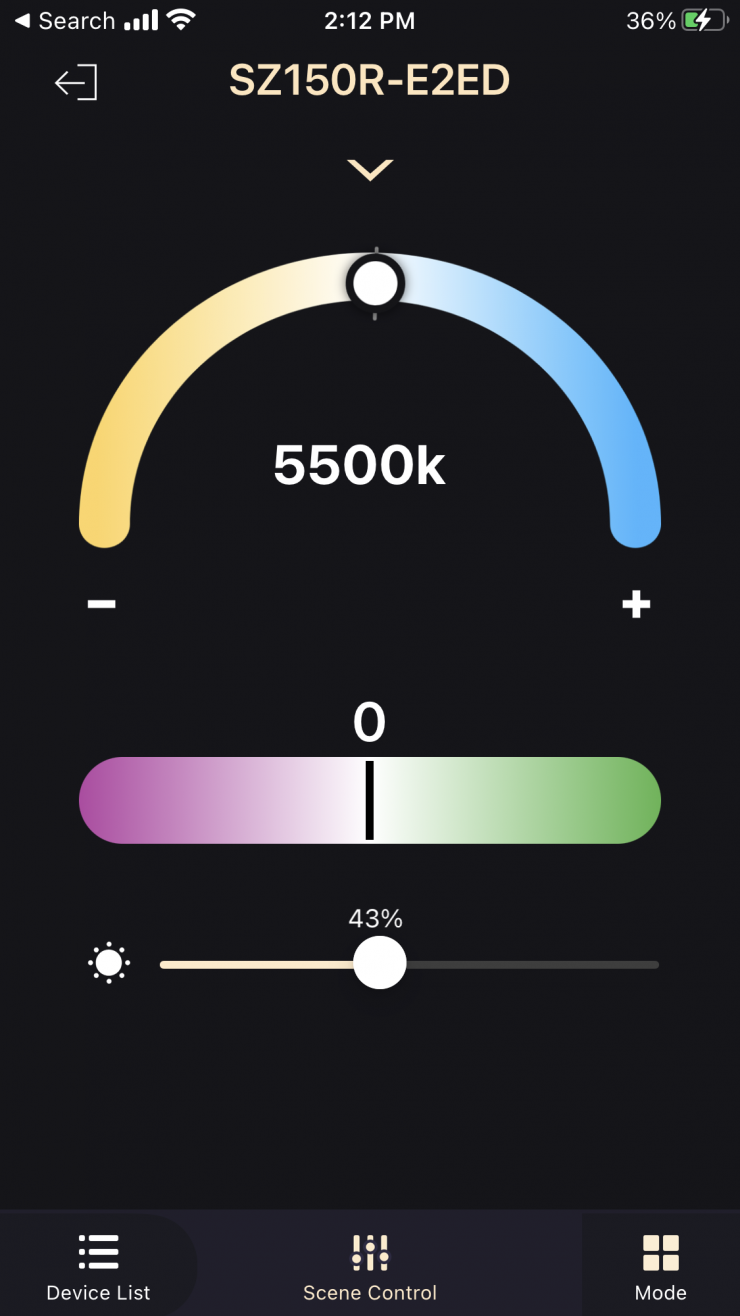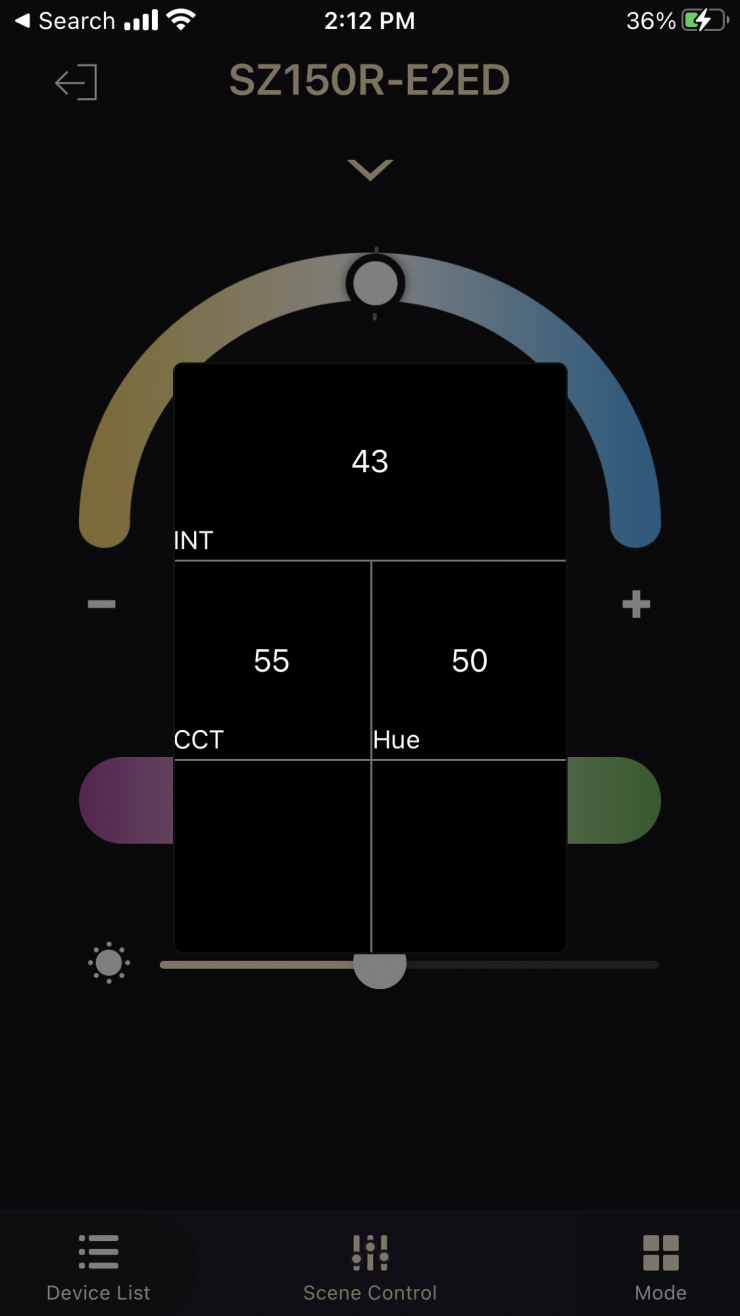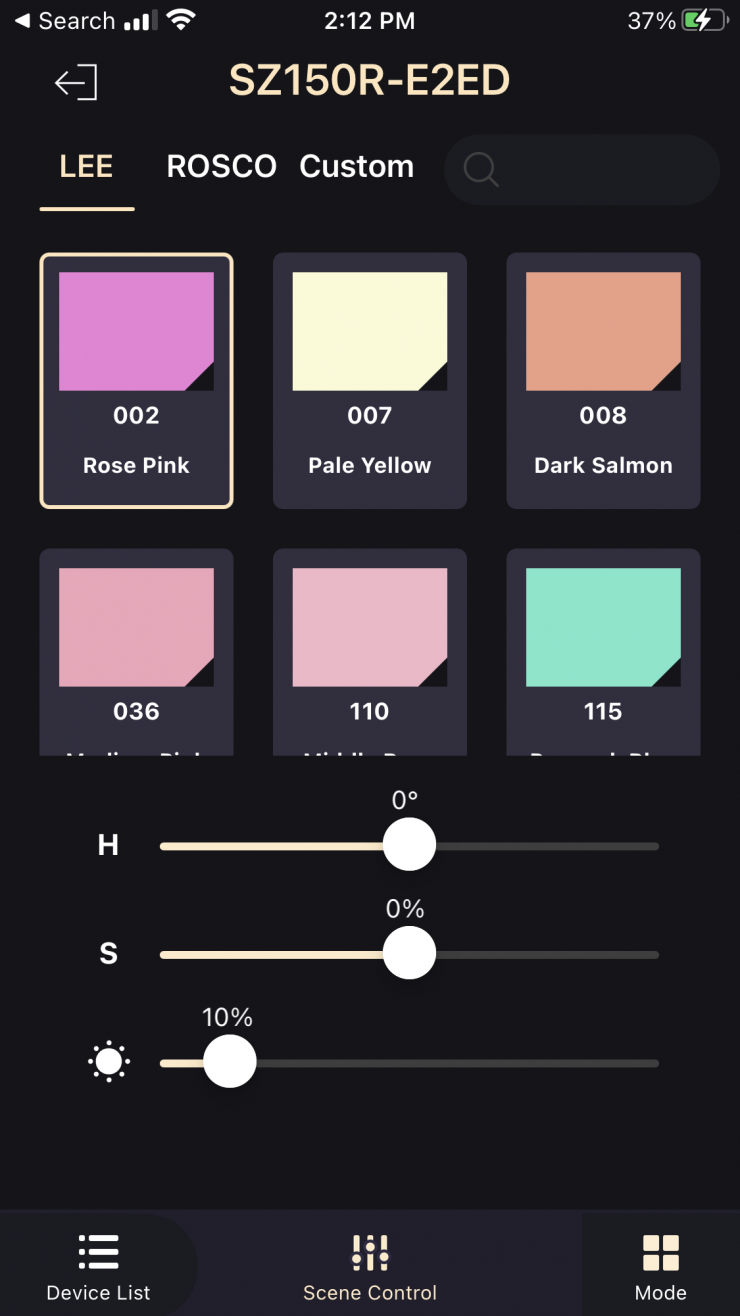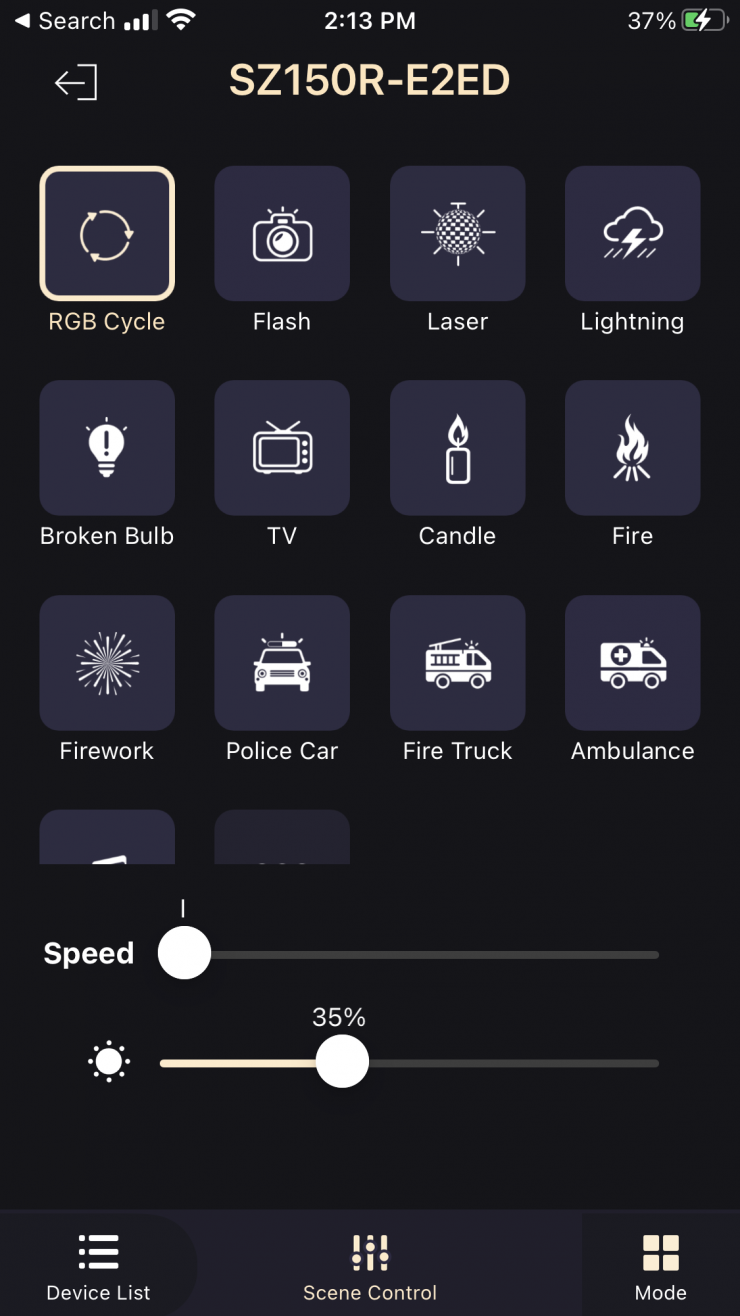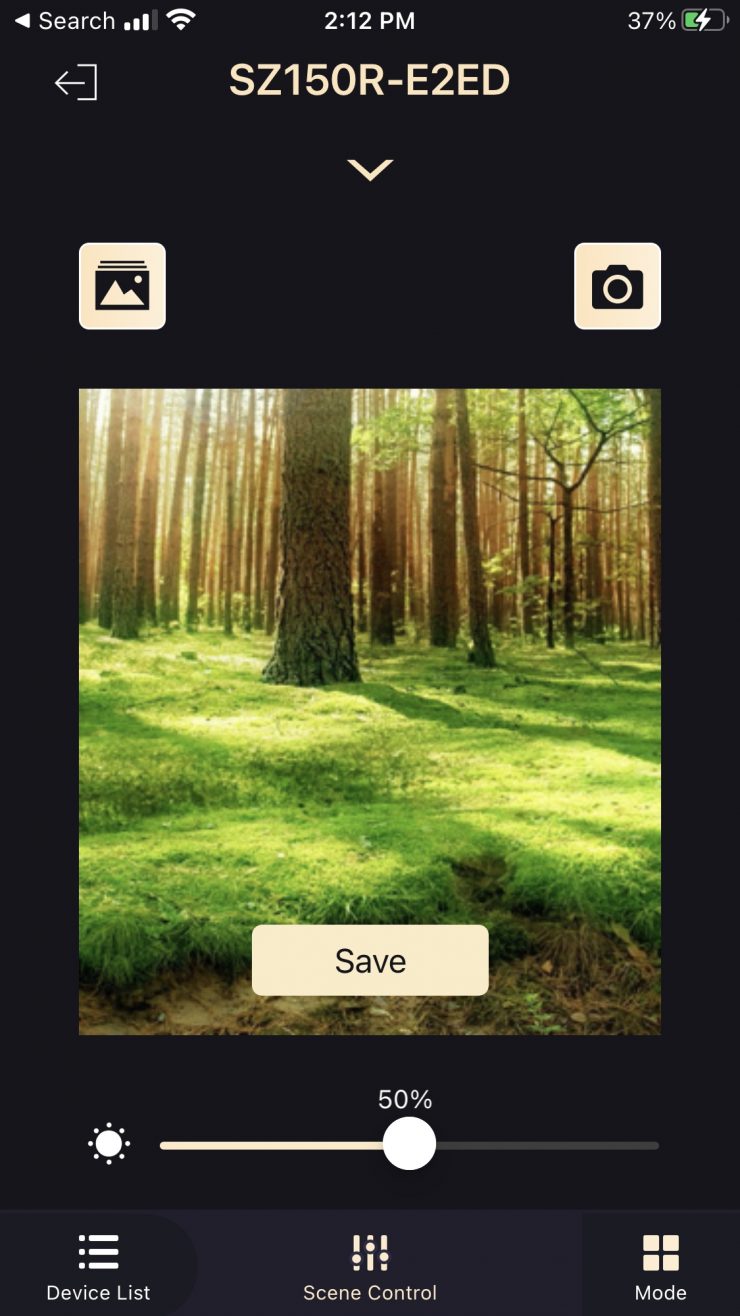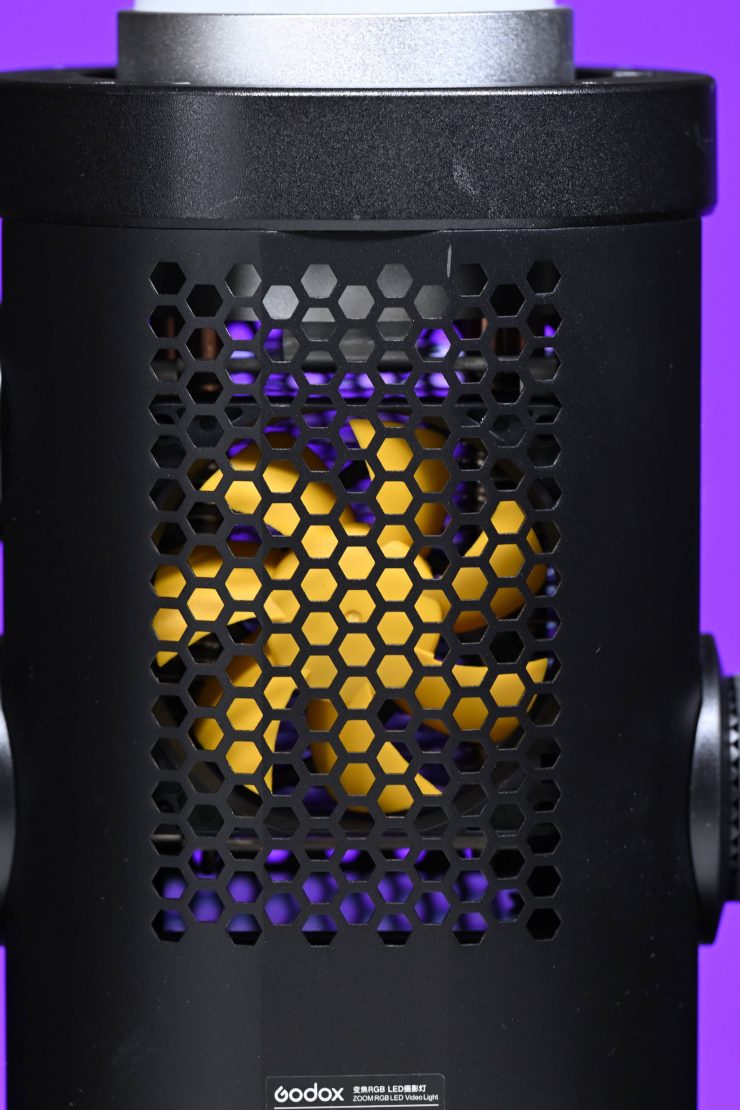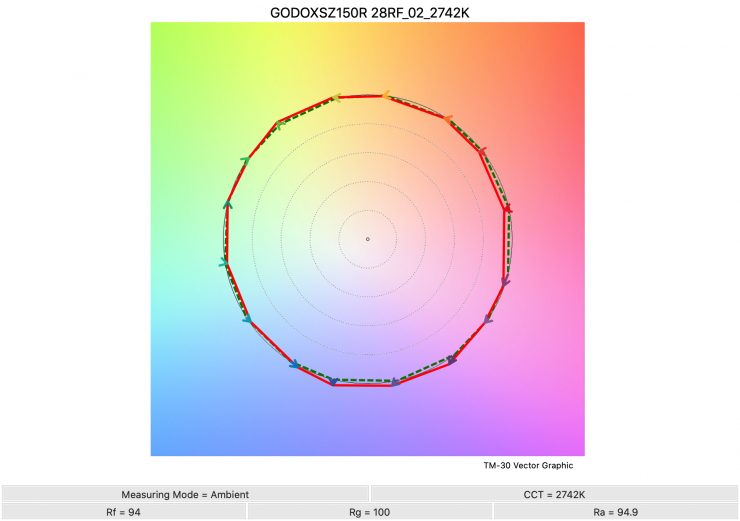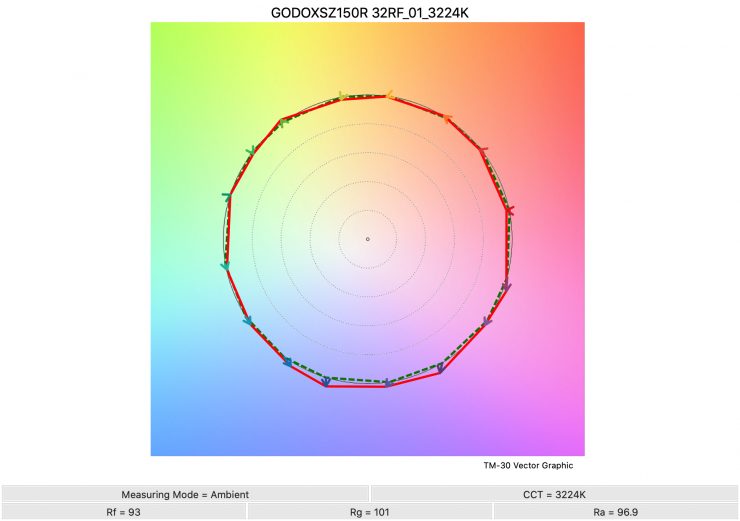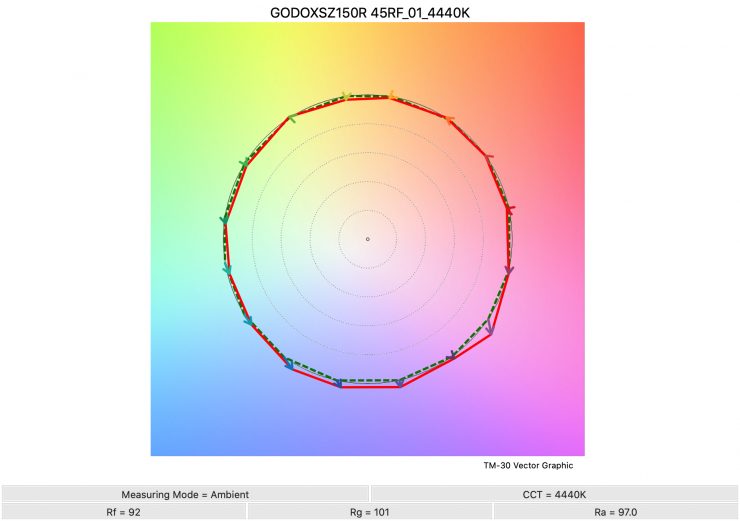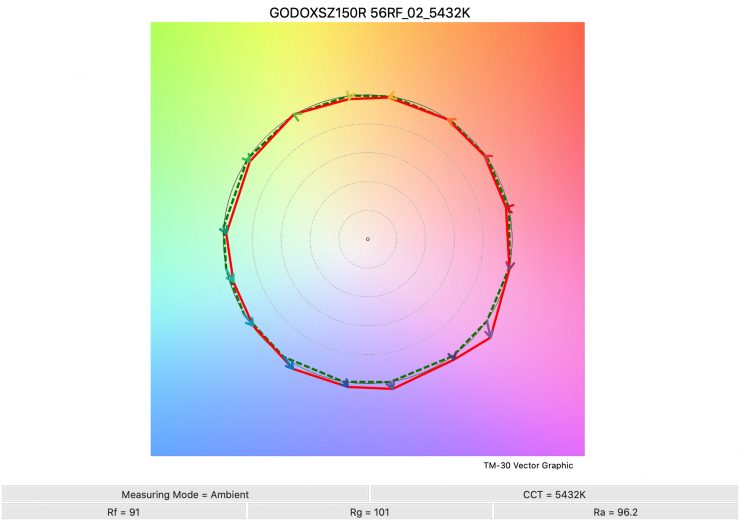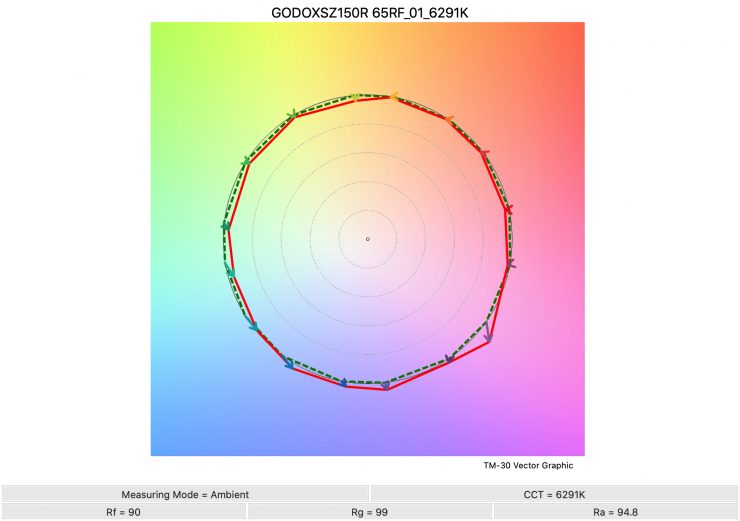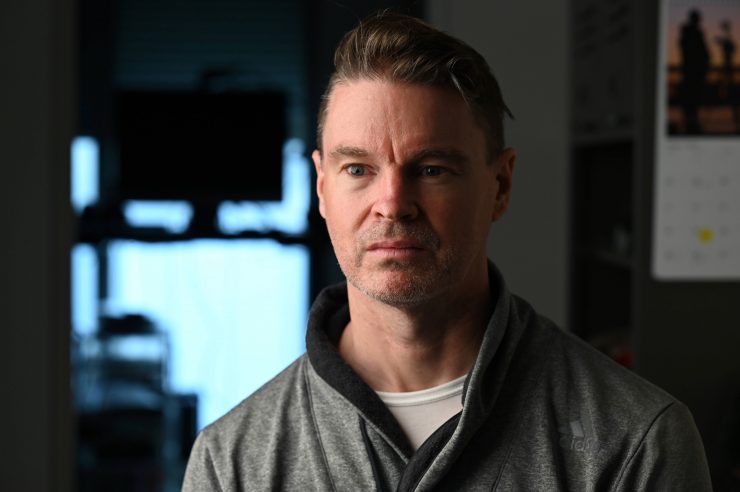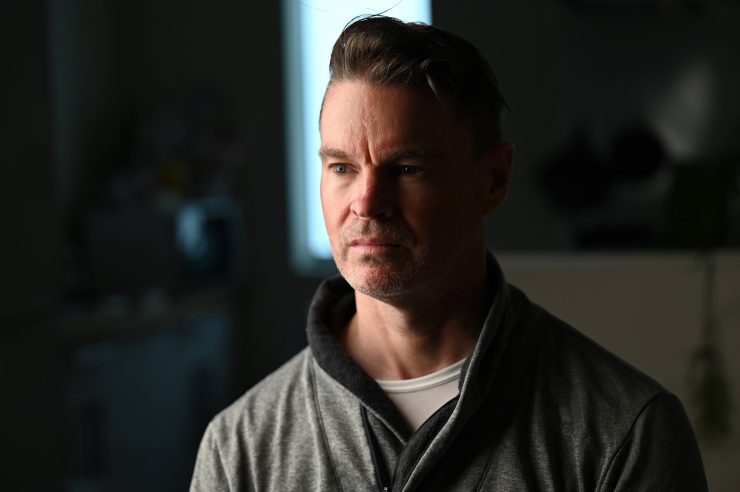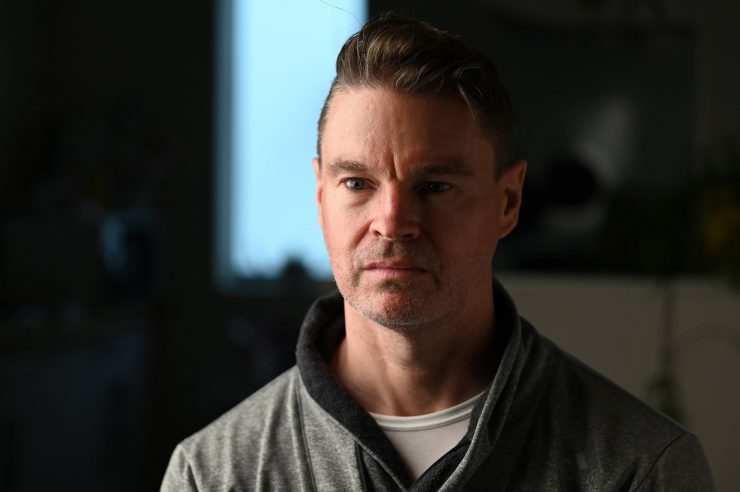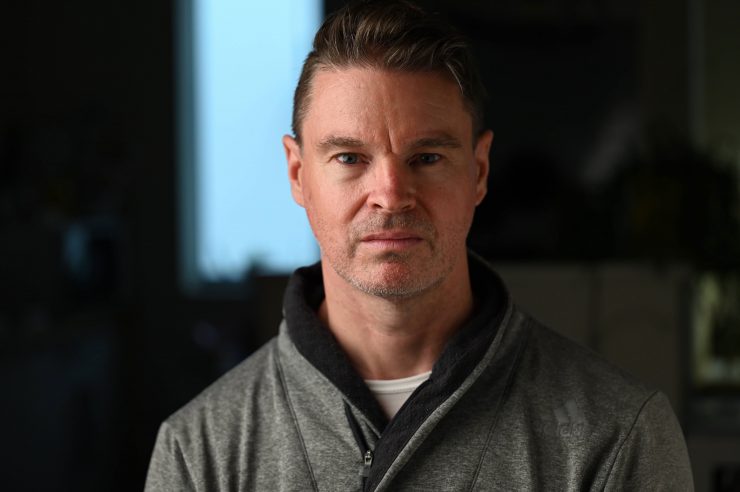
The Godox SZ150R is being touted as an affordable 150W Bi-Color zoomable RGB COB LED light. This light was teased in late December last year and it is now available to purchase.
Versatile COB lights in this form factor have become increasingly popular due to their swiss army knife style abilities, which enable them to be used for a variety of lighting scenarios.
The Godox SZ150R looks to be an interesting light given its low price. So without further ado, let’s get on with the review.
Concept
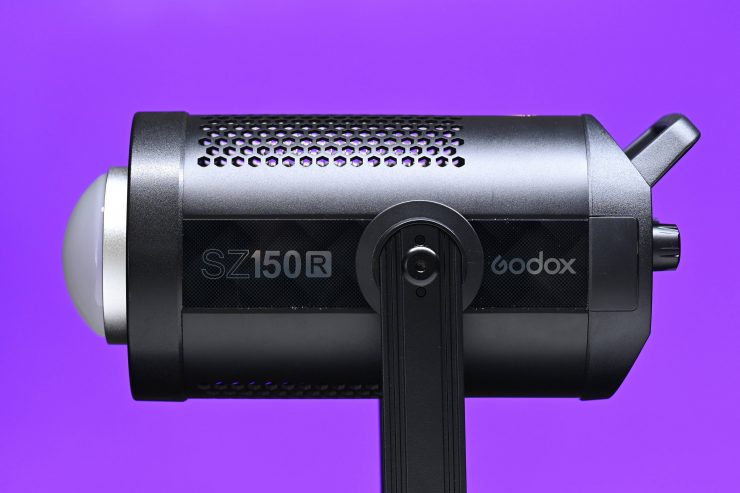
The concept behind the Godox SZ150R was to make a very flexible, fully-featured lighting source that won’t empty someone’s wallet.
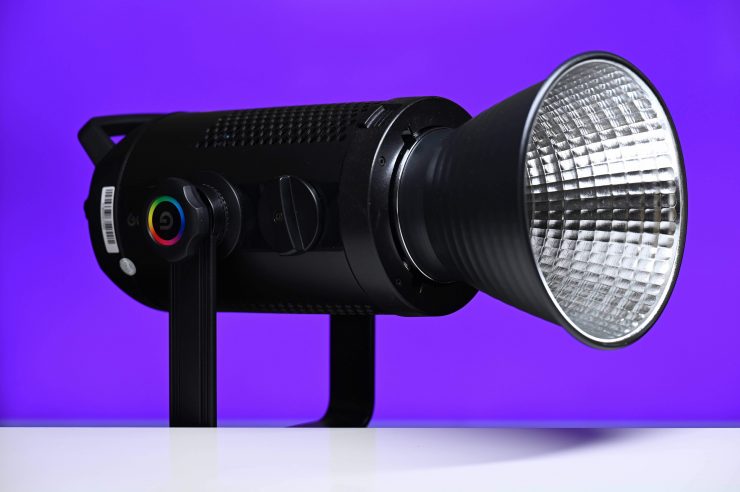
Godox SZ150R 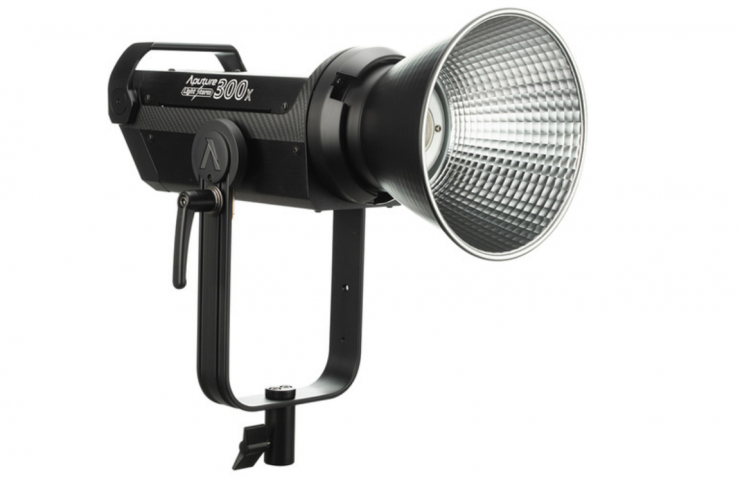
Aputure Light Storm LS300X 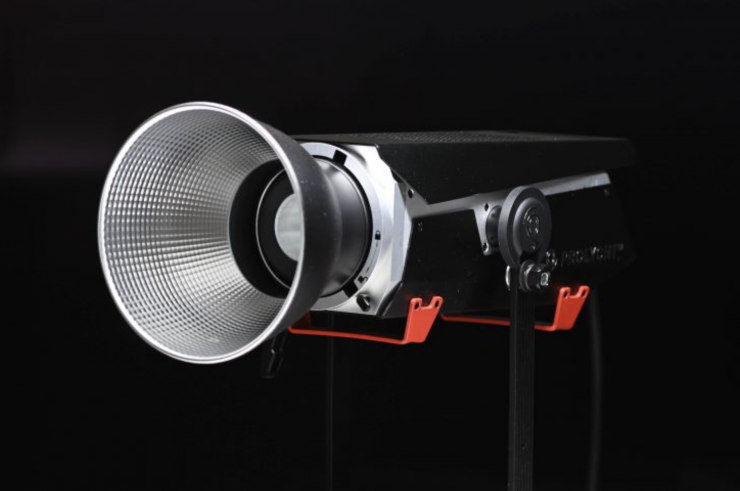
PROLYCHT Orion 300
Appearance-wise, the SZ150R looks reasonably similar to the Aputure Light Storm LS300X and the Prolycht Orion 300, albeit, a little smaller.
Build Quality
The build quality of the Godox SZ150R is ok. The housing seems reasonably robust and the yoke frame tightens securely. However, it is a little difficult to tighten once you start adding large lighting modifiers to the front of it.
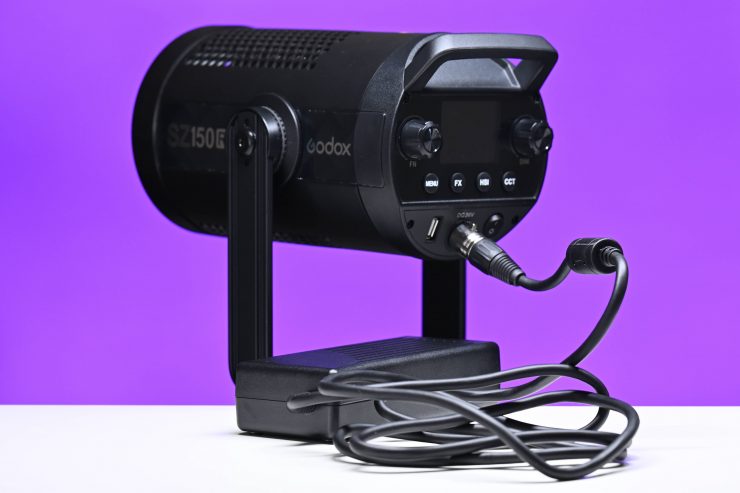
The controller is built into the light fixture, but there is a separate power supply.
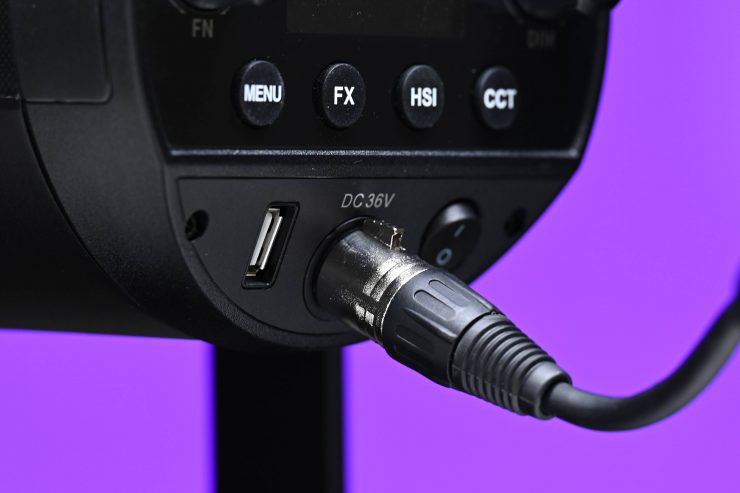
There is a 4-pin DC power cable that goes to the power supply. The cable is long enough so that you can position your fixture around 195cm / 67 4″ high and still keep the power supply on the ground.
Godox doesn’t give you any way of attaching the power supply to a light stand as there is no hook or lanyard on it like you will find on some other lights.
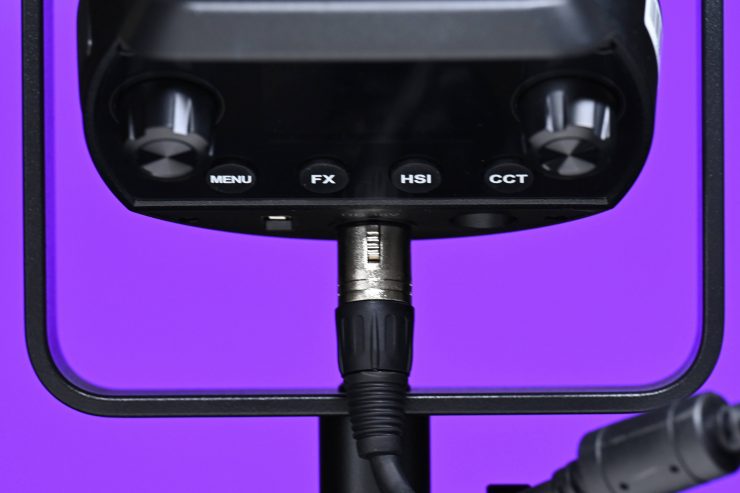
The other issue I encountered is that the 4-pin DC power cable that goes into the fixture ends up hitting the yoke frame if you try and angle the light up. I am not sure why companies don’t make a right-angled power cable to solve these issues.
The On/off switch and the buttons on the fixture are reasonably tactile, however, the dials are not.
Design
As far as the design goes, it does look a lot like most other COB fixtures.
The design consists of the lamp head and a separate power supply. This is fairly common with lights such as these. It is nice not to have a separate controller and have it built-into the fixture. This allows you to set up and pack away the light quickly.
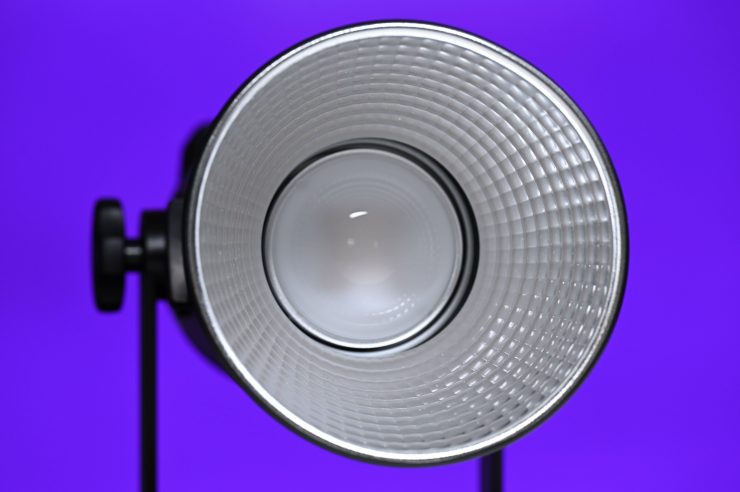
Lots of LED lights on the market, including the Godox SZ150R are using COB technology. COB stands for “Chip On Board” where multiple LED chips are packaged together as one lighting module. The advantage of COB LEDs being multi-chip packaged is that the light-emitting area of a COB LED can contain many times more light sources in the same area that standard LEDs could occupy. This results in a greatly increased lumen output per square inch.
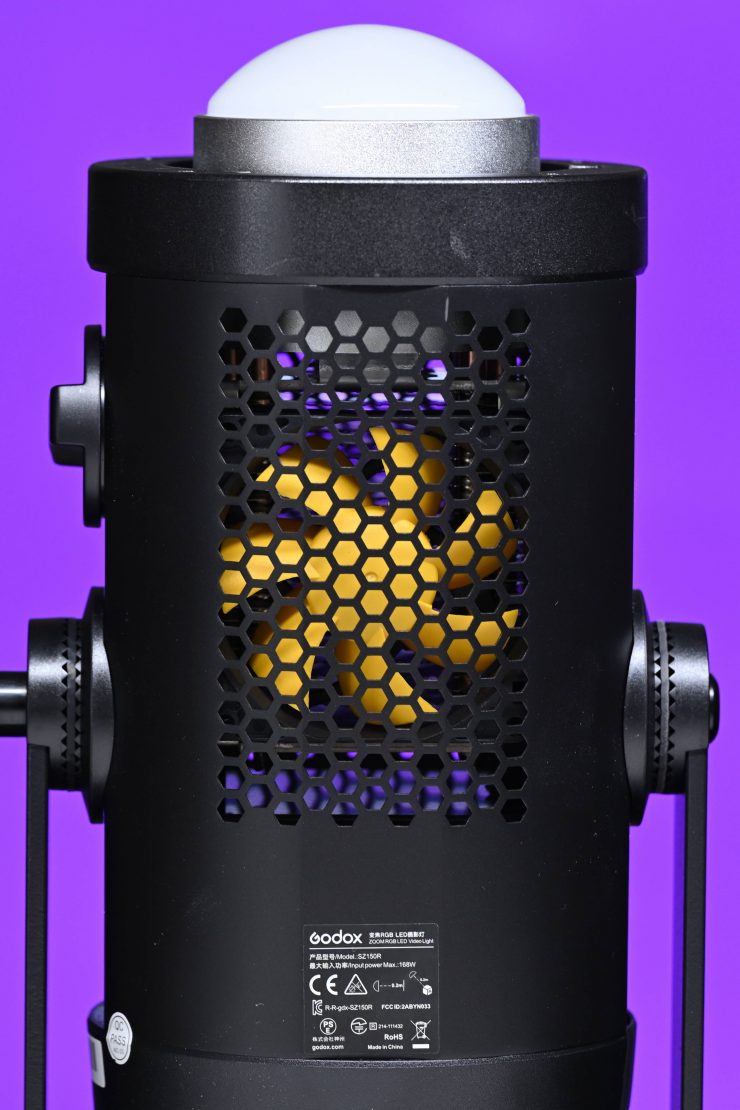
The fixture does feature a rather large fan that is on the underside of the light.
The biggest problem with COB LED lights is that unless you diffuse them they are very bright to look at and unsuitable for directly lighting talent.
Weight & Size
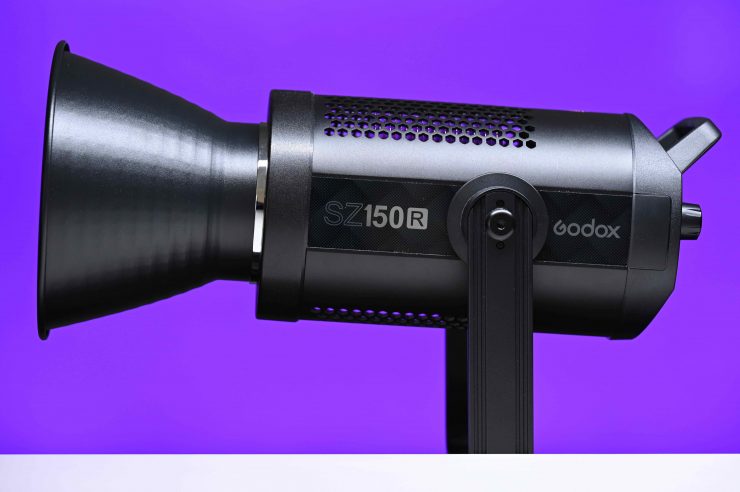
The Godox SZ150R weighs 2.65kg (5.84 lb). The controller is built-in to the lamp head, there is just a separate AC adapter. That weighs around 575g (1.26 lb).
So how does this weight compare to some other similar fixtures that have the same power draw?
| Light Head | Power Supply | |
| Godox SZ150R | 2.65 kg | 575g |
| GVM Great Video Maker Cob 150W RGB Full Color LED | 4.15 kg | |
| HIVE LIGHTING Hornet 200-C Adjustable Fresnel Omni-Color LED Light | 1.18 kg | not listed |
| HIVE LIGHTING Hornet 200-C Open Face Omni-Color LED Light | 1.18 kg | not listed |
The nice aspect about the Godox is that you don’t need to carry around a heavy duty lightstand to use it with.
Beam Angle
The beam angle of the fixture can be adjusted from 20° to 65°. You do this by turning a dial on the side of the fixture. You can only tell when you are at 20° or 65° as there are no physical indicators to tell you what beam angle you are actually using is. This is not a major concern, but if you were using two of these fixtures and you wanted to set the exact same beam angle, physical markings would have helped you do that.
Mounting
The SZ150R comes with a yoke frame that has enough clearance that you can move the light around and get a fair bit of rotation. Even though the light can physically travel 360 degrees around on the yoke frame, once you plug the power cable in, it will end up hitting the yoke frame at a certain angle. Obviously, if you put any sort of optical attachment on the light the degree to which you can move it will be reduced.
As I previously mentioned, if you put large sized lighting modifiers on the front of the fixture it does become more difficult to lock off the yoke frame adjustment knob.
Power Draw
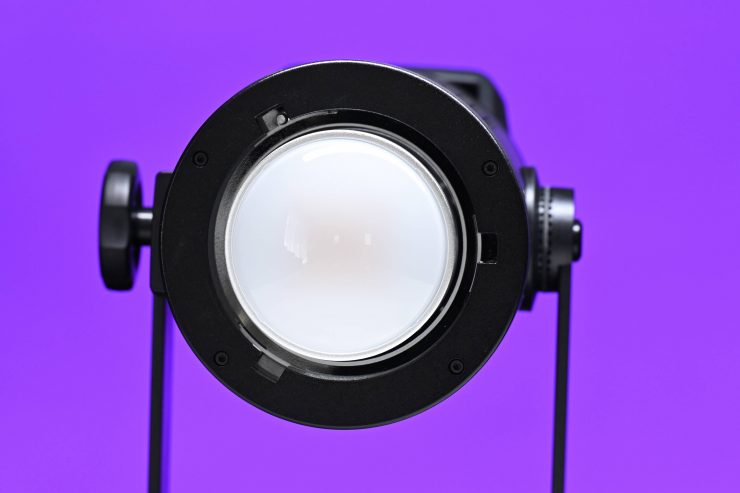
The light draws 150W. Even though the power draw is only 150W you can’t run this light off a camera battery, it has to be run from mains power. It is bizarre that the fixture only excepts a 36V DC input.
This is a missed opportunity by Godox. With a 150W power draw, they should have allowed the light to be powered via V-lock or AB Gold mount battery. This would have made the light a more appealing proposition for a lot of shooters.
Controls & Menu System
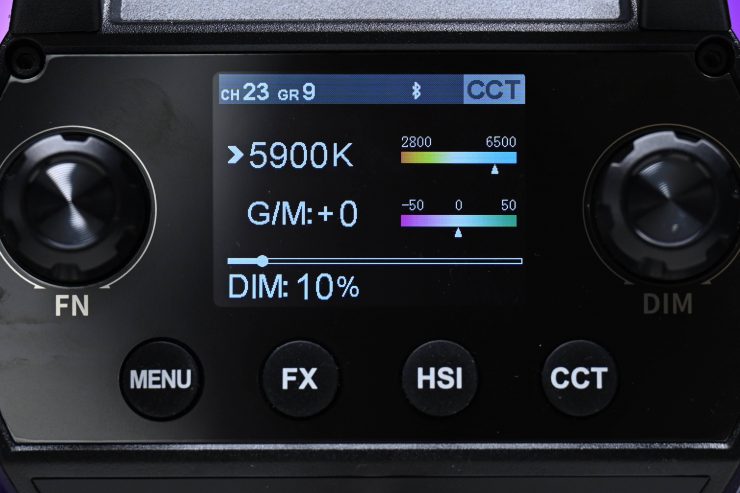
The rear LCD screen on the light looks similar to what you would find on the PROLYCHT Orion 300 and ARRI Orbiter. Although it is fairly basic, it does show you key information about the lights operating modes, brightness, CCT, etc. While it is not a touchscreen, it is still pretty quick to access all of the available lighting modes and make changes.
With a good light, you shouldn’t have to read a manual to work out how to operate it. You should be able to turn it on and use it straight away. In that respect, the Godox is straightforward and easy to operate.
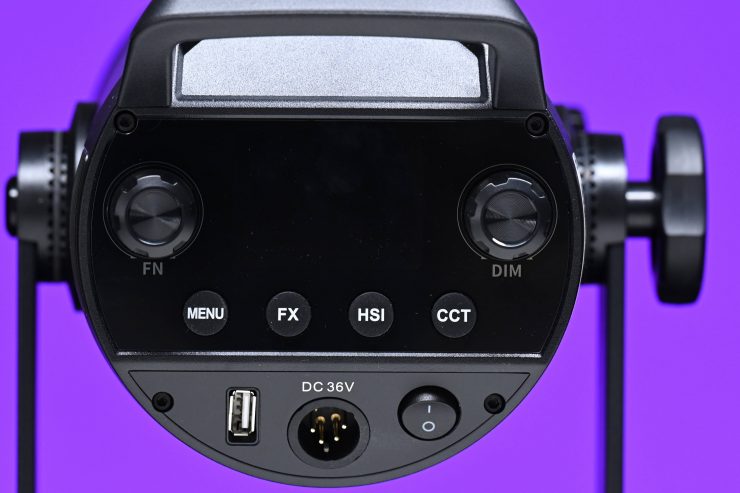
As I mentioned earlier in the build quality section, the physical dials that you use to control the light could be a little more tactile. I found it hard at times to get the exact Kelvin color temperature I wanted to be dialed in.
The menu is fairly basic, but you can adjust the DMX channel and group, turn the DMX on/off, turn the light’s ID on/off, turn the fan on/off, and reset the Bluetooth.
Bluetooth App
The light can be controlled via Bluetooth using the Godox Light App.
There is a range of parameters that you can adjust using the app.
The app is straight forward and easy to use. I like how they have made it intuitive and visually appealing. Lighting control shouldn’t be overly complicated.
The only downside when using the app is that when you make changes they don’t happen instantaneously, there is a slight delay.
Remote Controler
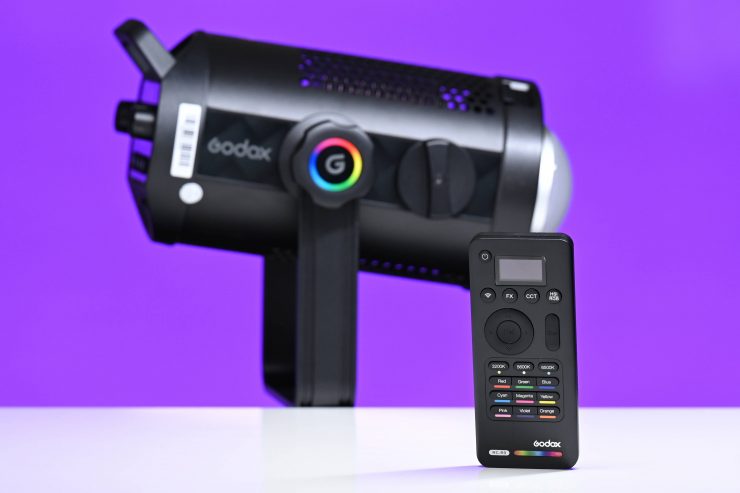
The light also comes with a remote controller. This is pretty easy and intuitive to use. Just a word of warning it doesn’t come with any batteries and you will need to source two AAA batteries.
RGB
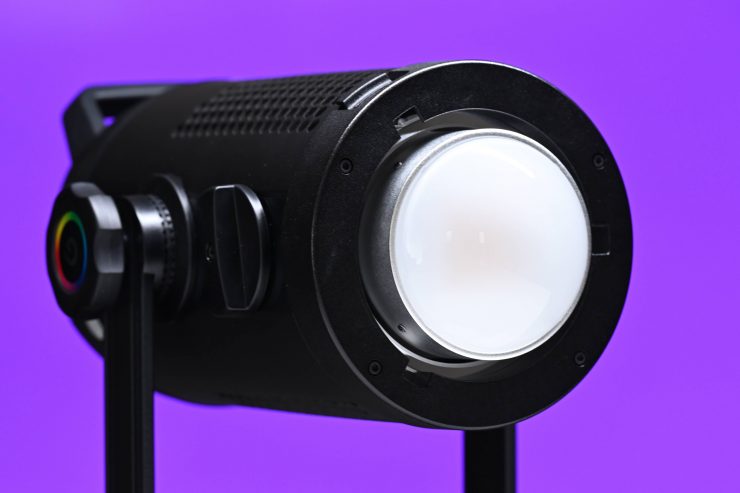
We are seeing a lot of lighting companies now using RGBW technology. RGBW stands for Red, Green, Blue & Warm White. There are, however, other types of RGB such as RGBWW and RGBAW.
Godox doesn’t list anywhere what type of RGB LEDs the SZ150R is using.
Operating Modes
The light has the following lighting modes that you can access from the fixture:
- CCT
- HSI
- FX
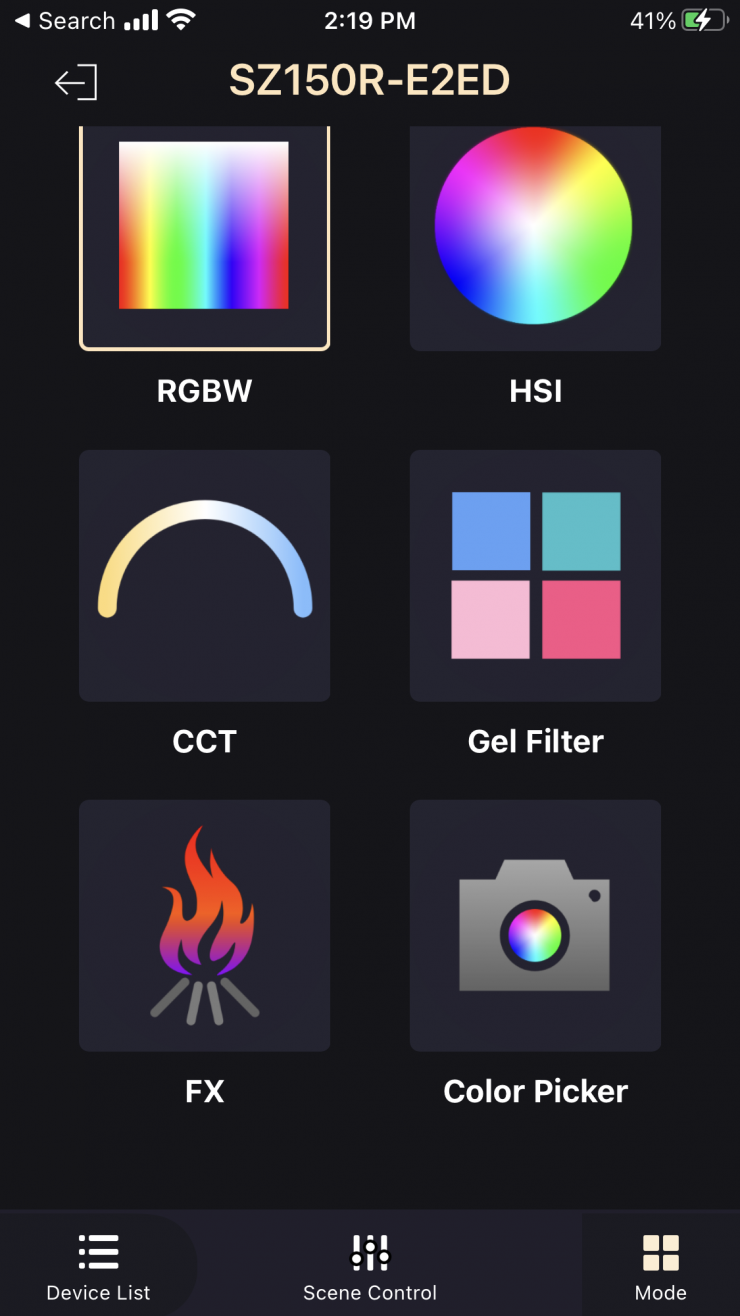
There also some additional modes, but they can only be accessed through the app. These modes are:
- RGBW
- GEL FILTER
- COLOR PICKER
Correlated Color Temperature (CCT)
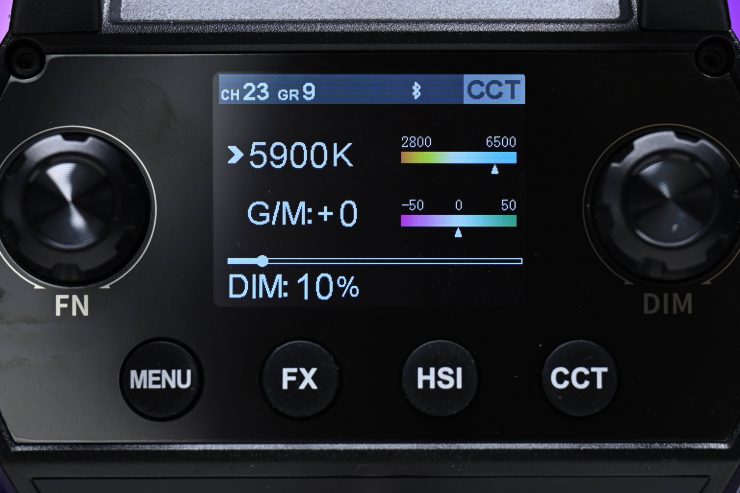
This is the mode most people are going to use the light in. In the CCT Mode, you have full access to making Kelvin color temperature adjustments between 2800-6500K.
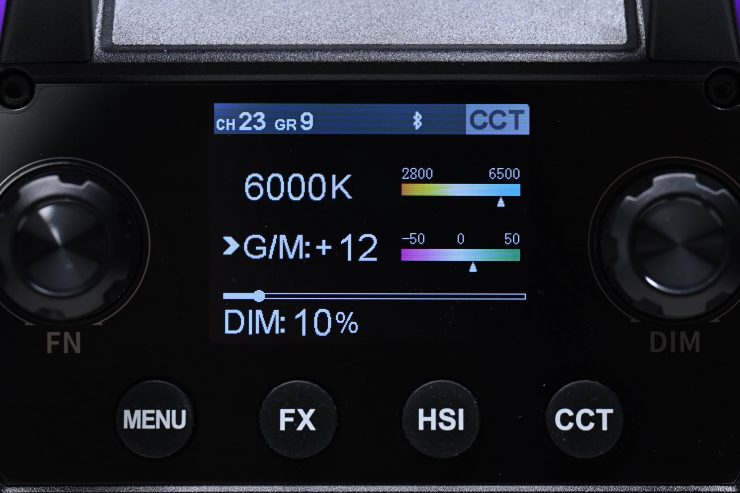
The fixture also has continuously variable (full minus green to full plus green) correction.
Being able to dial in more or reduce the amount of green coming from your lighting source can make a huge difference. Different camera companies use different sensors in their cameras and they all react differently to light. Some camera sensors may lean towards magenta, and some, more towards green. By making CCT adjustments you can dial in the light so that it looks better for whatever camera system you are using. CCT adjustment also helps when you are trying to match lights from different manufacturers.
The Kelvin color temperature range is not overly impressive for an RGB fixture. A lot of other lights have CCT ranges that go all the way to 20,000K.
HSI
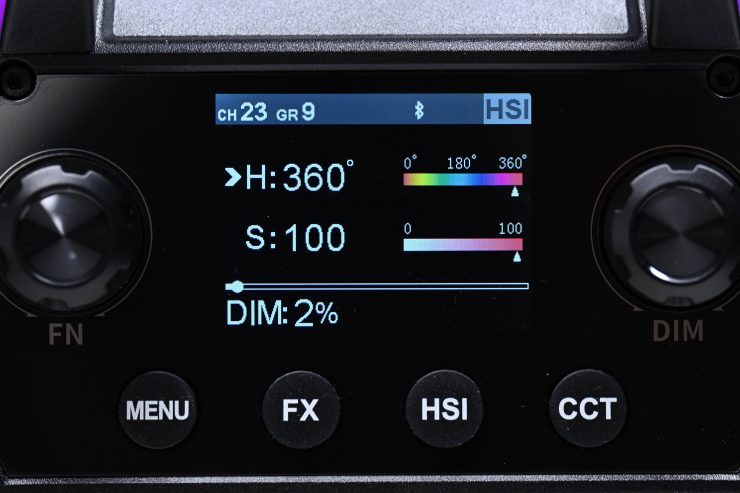
The HSI mode lets you create just about any color you can think of. It gives you full hue and saturation control as well as intensity. By manipulating, the hue and saturation you can create some really interesting colors that depending on the project you are working on can really add some creative flair. I quite like using this mode to create a lot of color separation between the foreground and background, or for recreating a really cold or warm-looking image.
The colors are represented as degrees from 0-360.
The interface on the fixtures screen shows you a reasonably good visual aid to make it easier to dial in the exact color you want to create. It isn’t as good as the visual reference on some other lights, but in saying that, on some lights, there are just dials with no visual reference.
If you want a better reference when accessing the HSI mode you are better off using the Godox Bluetooth app.
FX
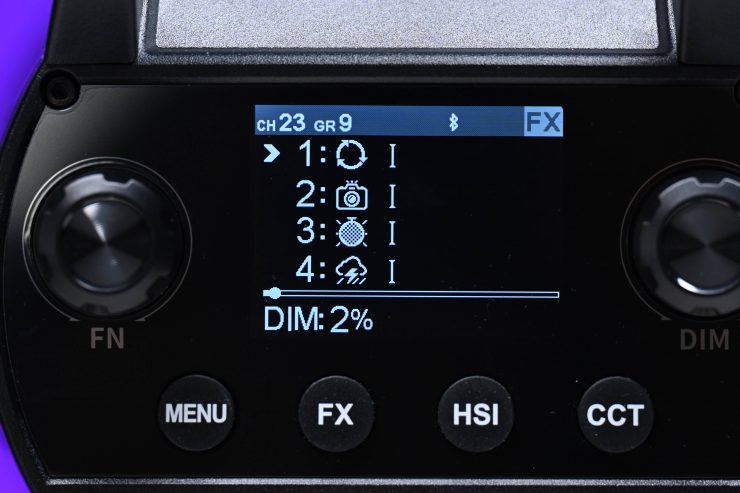
The FX mode lets you recreate a wide range of lighting effects that can be handy for certain scenarios. The effects include:
- RGB Cycle
- Laser
- Flash
- Lightning
- Police Car
- Ambulance
- Fire Truck
- Fireworks
- Broken Bulb
- TV
- Candle
- Laser
- Fire
- SOS
All the effects modes can be individually adjusted, but you can only adjust the speed and intensity of the effects.
Color Picker
The Color Picker allows you to select a color from a photo or an image that you have up on your smartphone and then the light will try to replicate that color. This is something we have previously seen in lights from companies such as Luxli and Aputure.
This does work, however, like most lights that have a color picker, the results to tend to vary quite a lot.
How does it compare to some of the competition?
| Godox SZ150R | GVM COB 150W RGB Full Color LED | |
| CCT Range | 2800-6500K | 3200-5600K |
| RGB | Yes | Yes |
| +/- GM | Yes | No |
| HSI | Yes | No |
| Gels | No | No |
| Source Mode | No | No |
| X/Y coordinates | No | No |
| Effects | Yes | Yes |
| Mount | Bowens-S Mount | Bowens-S Mount |
| Beam Angle | 20° to 65° | 60° to 120° |
| Power Draw | 150W | 150W |
| App Control | Yes | Yes |
| Battery Plate | No | Optional |
| Weight | 2.65 kg | 4.15 kg |
| Godox SZ150R | HIVE LIGHTING Hornet 200-C Adjustable Fresnel | |
| CCT Range | 2800-6500K | 1650-8000K |
| RGB | Yes | Yes |
| +/- GM | Yes | Yes |
| HSI | Yes | Yes |
| Gels | No | No |
| Source Mode | No | Yes |
| X/Y coordinates | No | No |
| Effects | Yes | Yes |
| Mount | Bowens-S Mount | Profoto |
| Beam Angle | 20° to 65° | 15° to 50° |
| Power Draw | 150W | 150W |
| App Control | Yes | Yes |
| Battery Plate | No | No |
| Weight | 2.65 kg | 1.3 kg (excluding power supply) |
How does it stay cool?
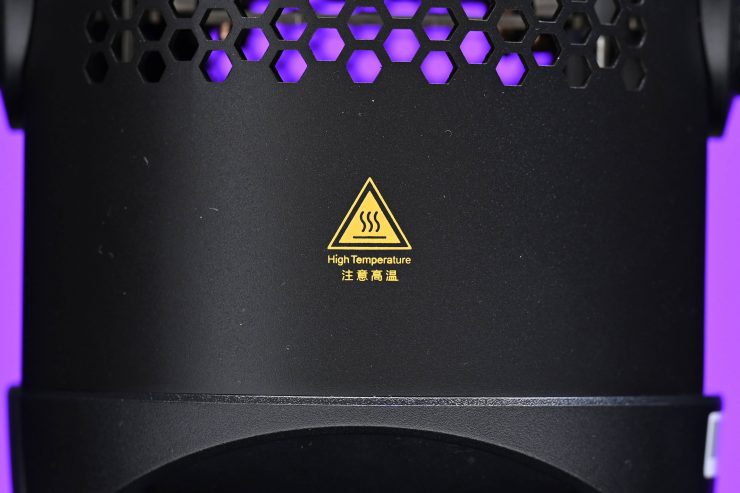
Large, high-powered COB lights get very hot, and keeping them cool is not an easy task. The SZ150R has a warning label on its housing.
The light features an in-built fan, but it can be turned off. The SZ150R hoes have a Silent Mode Option that allows the light to run without generating any noise.
The fan in the light is very loud and I wouldn’t want it turned on if I was recording audio in its proximity.
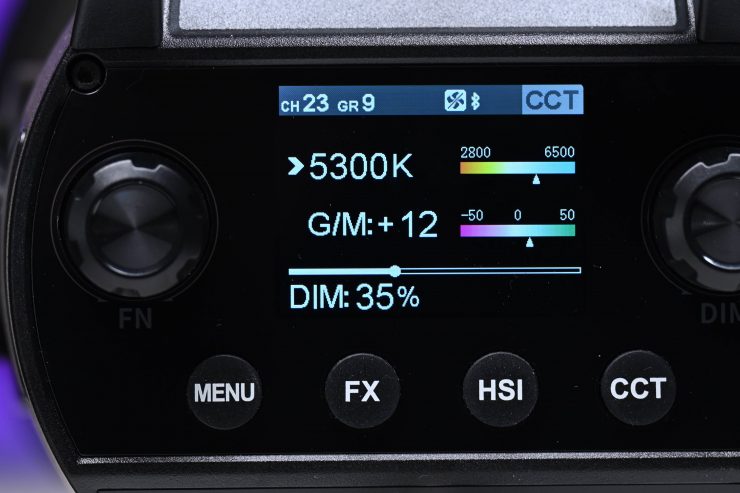
Now, here is the catch. If you actually turn the fan off then the output gets limited to 35%. Why Godox didn’t put in an auto fan mode is a bit of a head-scratcher.
The fan noise is definitely the fixture’s Achillies heel. I found it be a be an issue and I wouldn’t personally use this light for recording audio in a quiet room.
Photometrics
So now let’s get to the photometric results. I always test lights in this way so that I get a reference to how they compare to other fixtures. Results only tell part of the story and should never be used alone to judge a light. I have found from extensive testing over the years that certain lights that have good photometric results don’t always look good, and lights that have worse photometric scores can sometimes look better than their results indicate.
Different lights can also look different depending on what camera you happen to be using.
Output & Color Temperature Accuracy
I tested the Godox SZ150R at a variety of Kelvin color temperatures with a Sekonic C-800 Spectrometer to find out how much output the light had and how accurate the Kelvin color temperature reproduction was. All readings are taken at a distance of 1m (3.28ft) in a controlled environment.
5600K
5600K (standard reflector 65°)
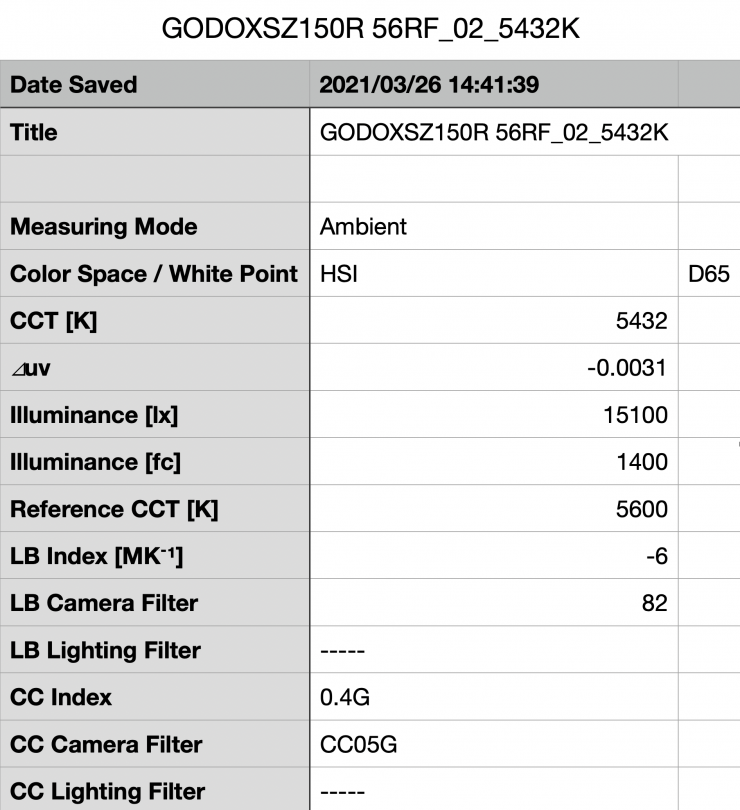
Above you can see the Godox recorded an output of 15100 lx (1400 fc) when set at 5600K using the standard reflector and set at 65°. This is a good amount of output for a 150W fixture.
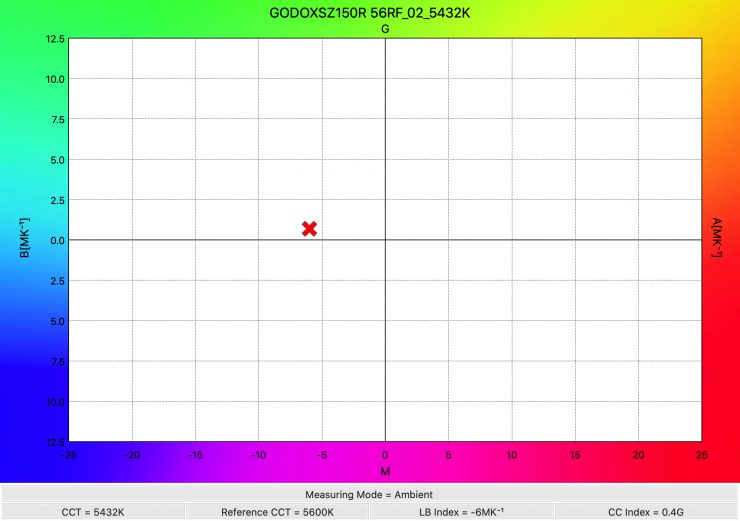
The light recorded a Kelvin color temperature reading of 5432K which was reasonable, but not great.
5600K (standard reflector 20°)
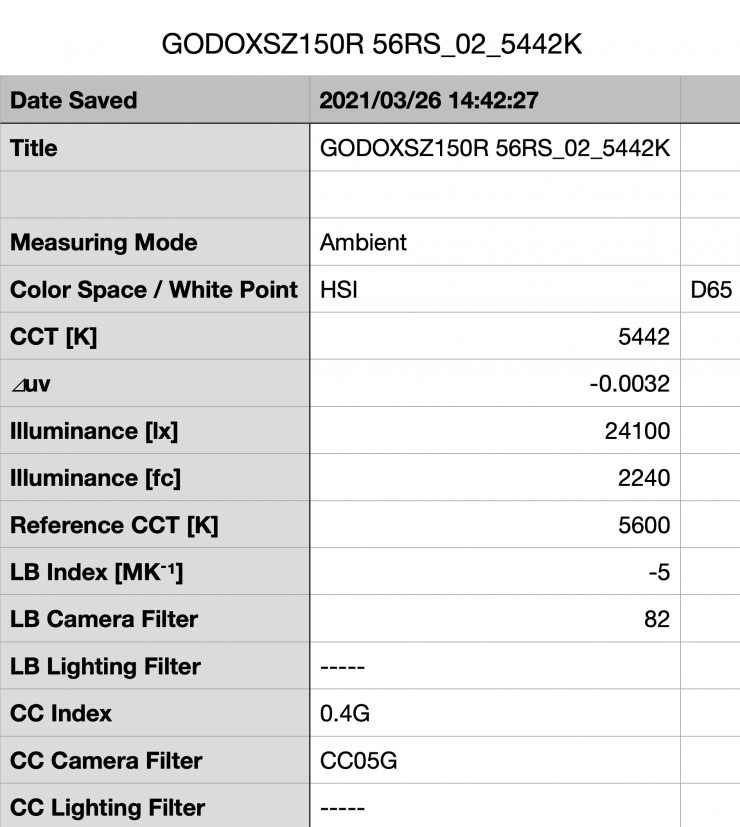
Above you can see the Godox recorded an output of 24100 lx (2240 fc) when set at 5600K using the standard reflector at 20°.
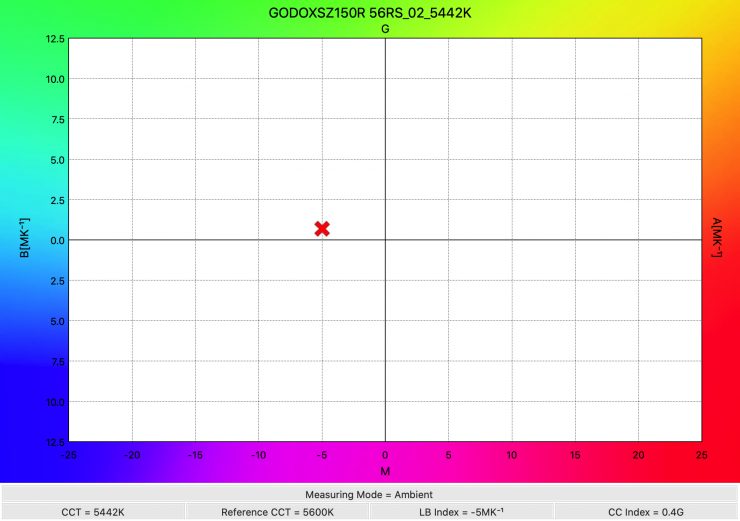
The light recorded a Kelvin color temperature reading of 5442K which was reasonable, but not great.
5600K (open face 65°)
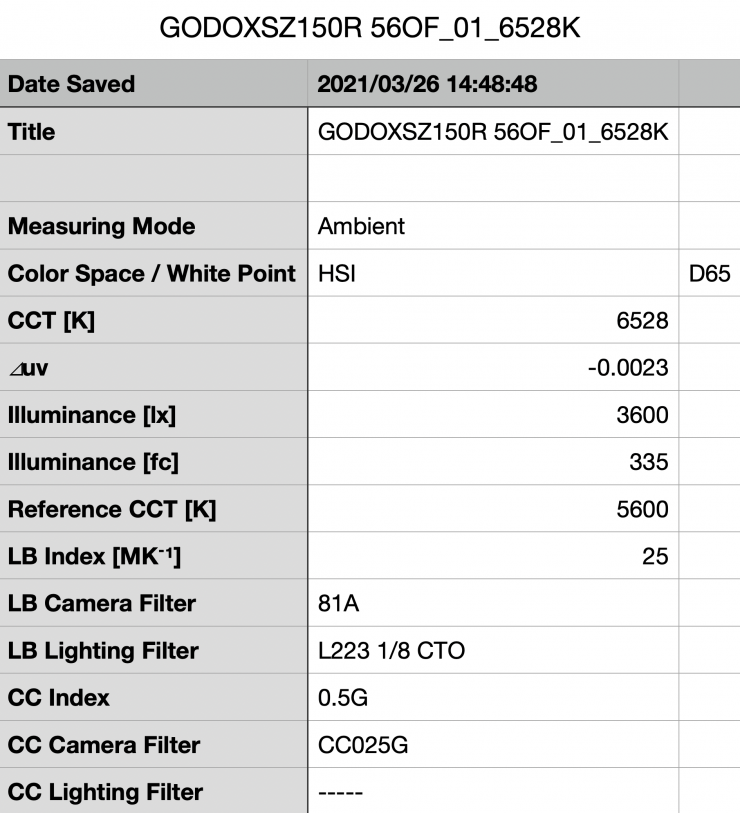
Above you can see the Godox recorded an output of 3600 lx (335 fc) when set at 5600K at 65° with no reflector being used.
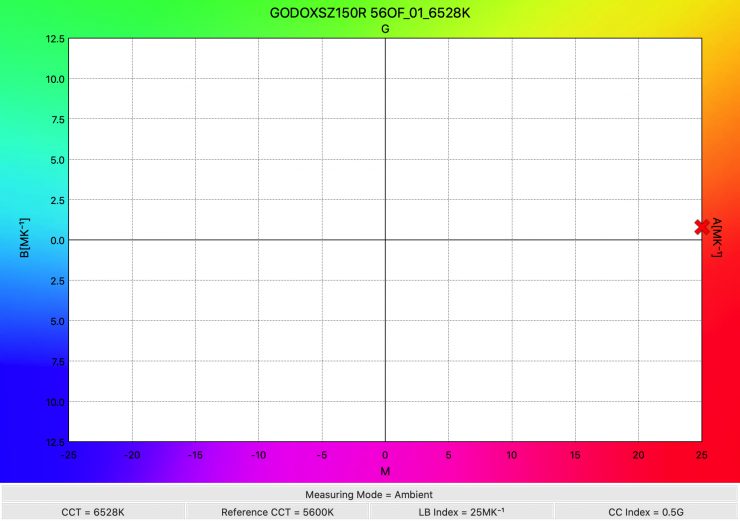
The light recorded a Kelvin color temperature reading of 6528K which was horrible for a 5600K source light. This shows me that the reflector that comes with the light is a lot more Kelvin color temperature accurate than if you use the light open face.
3200K
3200K (standard reflector 65°)
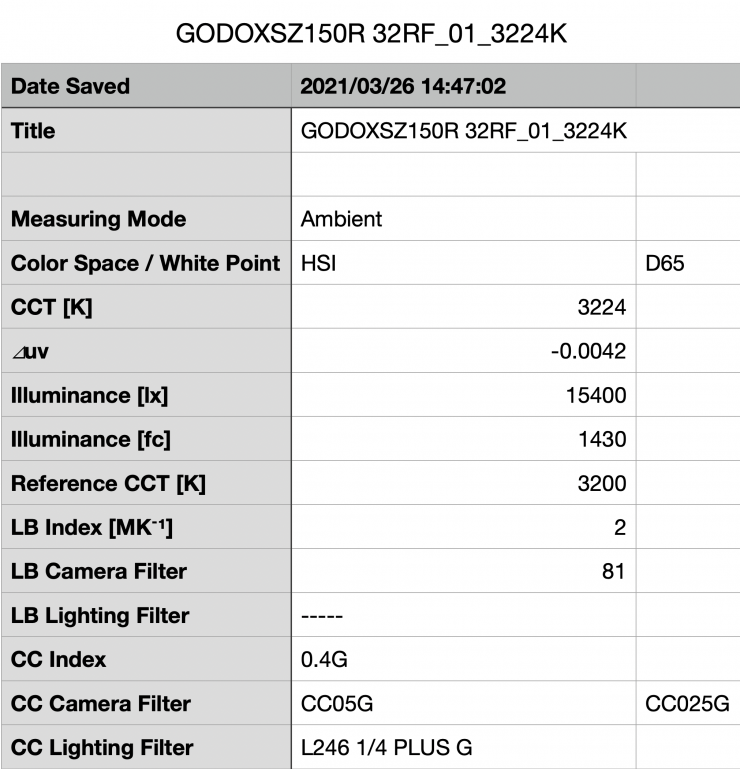
Above you can see the lights output when it was set at 3200K with the standard reflector and being set at 65°. It produced 15400 lx (1430 fc), which was almost identical to what it produced at 5600K.
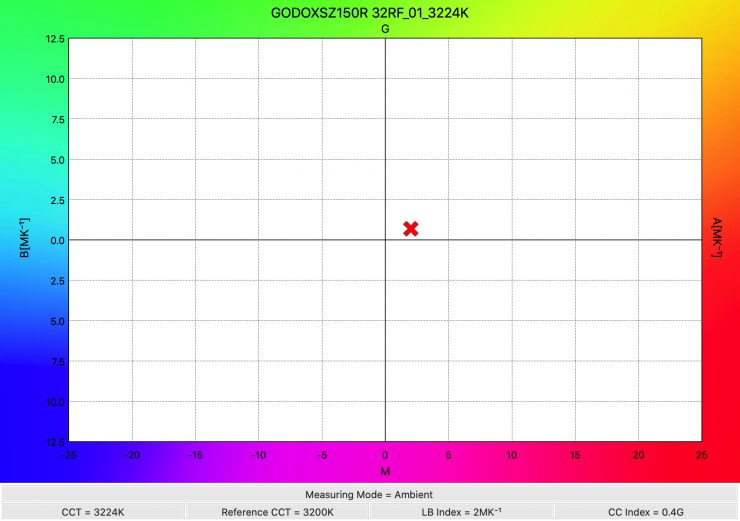
As far as Kelvin color temperature accuracy goes, it recorded a very accurate reading of 3224K. The light is a lot more accurate at producing a 3200K source than a 5600K source.
3200K (standard reflector 20°)
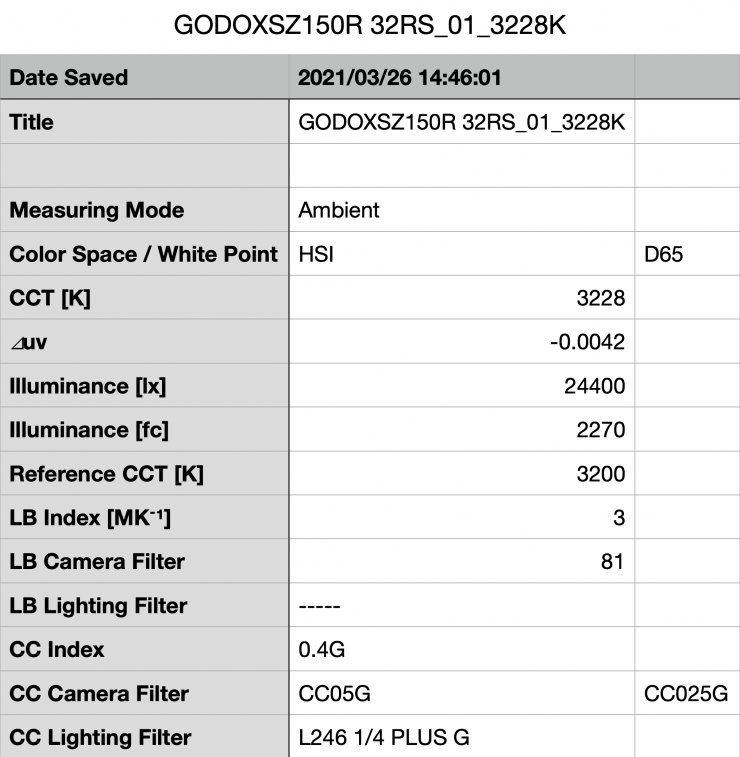
Above you can see the lights output when it was set at 3200K with the standard reflector and being set at 20°. It produced 24400 lx (2270 fc), which was almost identical to what it produced at 5600K.
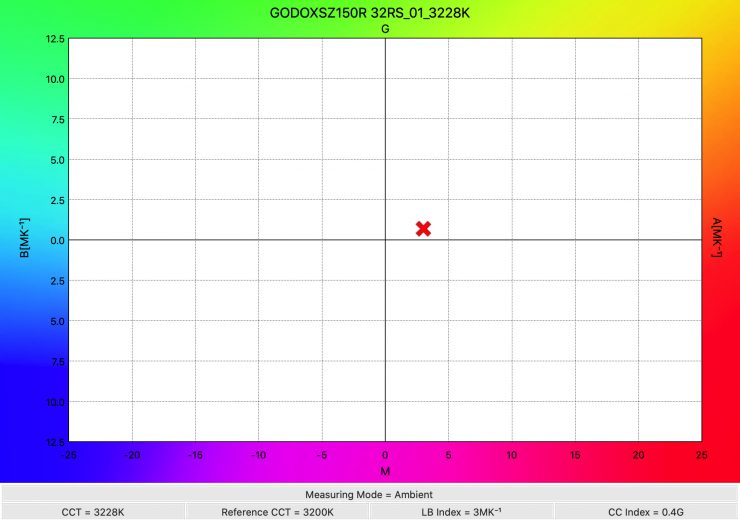
As far as Kelvin color temperature accuracy goes, it recorded a very accurate reading of 3228K.
How does it perform at various Kelvin color temperatures?
Summary of results
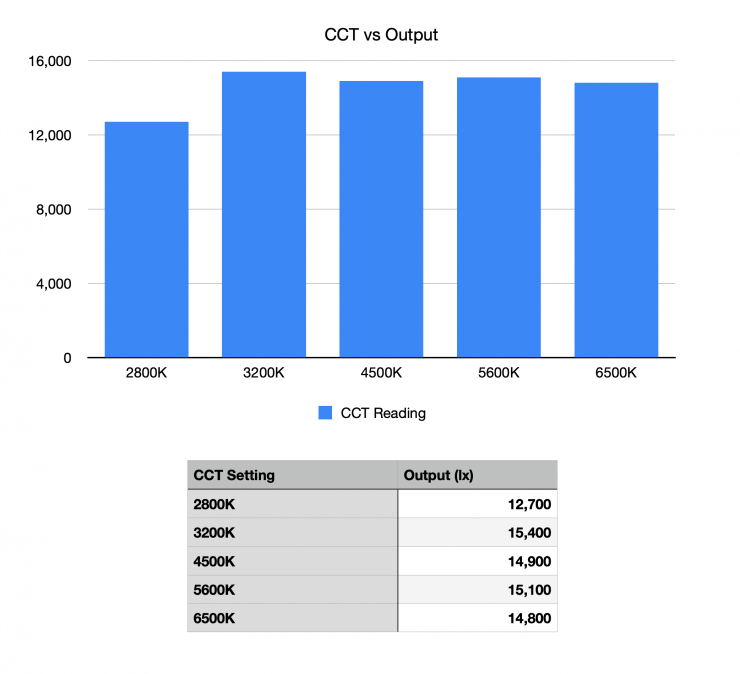
These results show me that the light’s output is very consistent at most Kelvin color temperatures and that it has the most output when used at 3200K. The output across the 2800K to 6500K range only varies by 17.5%. From 3200K to 6500K it only varies by 3.9%.
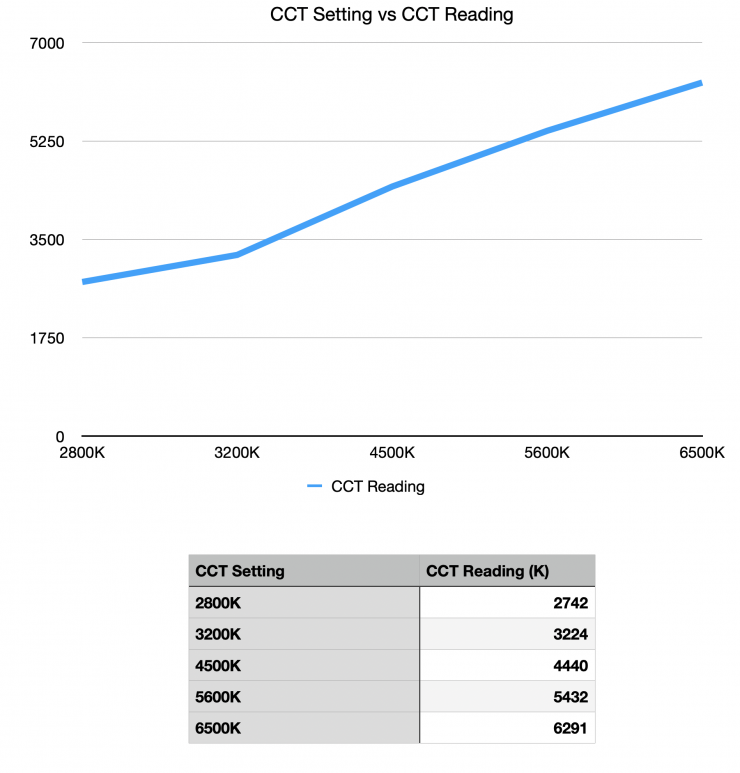
The results also show me that the light is highly accurate when it comes to Kelvin color temperature reproduction from 2800K to 4500K. At 5600K and 6500K that accuracy drops off.
+/- Green adjustment
As the fixture includes +/- Green adjustment you can quite easily correct any tint. While there is no exact science to this, and it really depends on what camera you are using as well, it’s just a matter of trial and error to see what setting actually works the best. The nice thing is, any light with +/- Green adjustment can be fine-tuned to deliver better results.
Kelvin color consistency when dimming the light
Now, what you should always do when testing lights is to see if the Kelvin color temperature remains consistent when dimming the light. Just because you set a light at say 5600K, that doesn’t mean that the Kelvin color temperature will remain stable as you start dimming the fixture down.
I decided to do a series of tests at 100%/75%/50%/25%10% to see if the Kelvin color temperature being recorded changed. This was done at a distance of 1m using a Sekonic C-800.
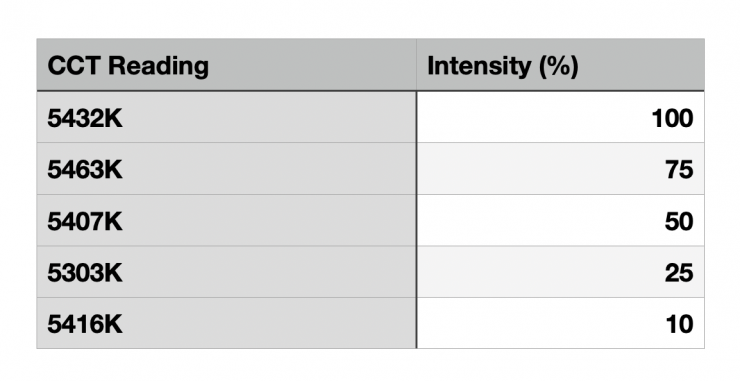
The Godox SZ150R is able to maintain pretty good Kelvin color consistency as you start dimming the fixture. My testing showed that the Kelvin color temperature only varied by 160K. These are good results and it shows me that you can dim this fixture down without having to worry about big changes in Kelvin color temperature.
Color Rendering
5600K (standard reflector 65°)
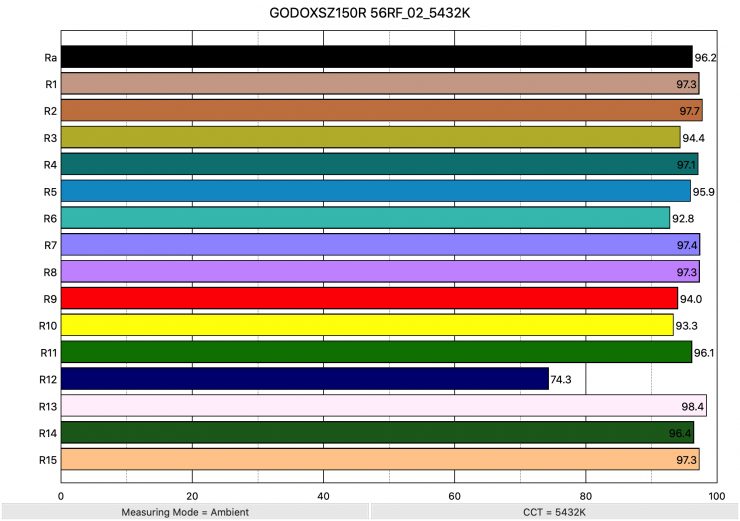
So now that we have seen how much output the Godox SZ150R produces, how does it perform when it comes to replicating accurate colors. Above you can see that when the light was set at 5600K using the standard reflector it recorded an average CRI (R1-R8) of 96.2 and an extended CRI (R1-R15) of 94.64. For replicating accurate skin tones it recorded for R9 94.0 (red), 98.4 for R13 (closest to caucasian skin tones), and 97.3 for R15 (closest to Asian skin tones). These are all excellent results.
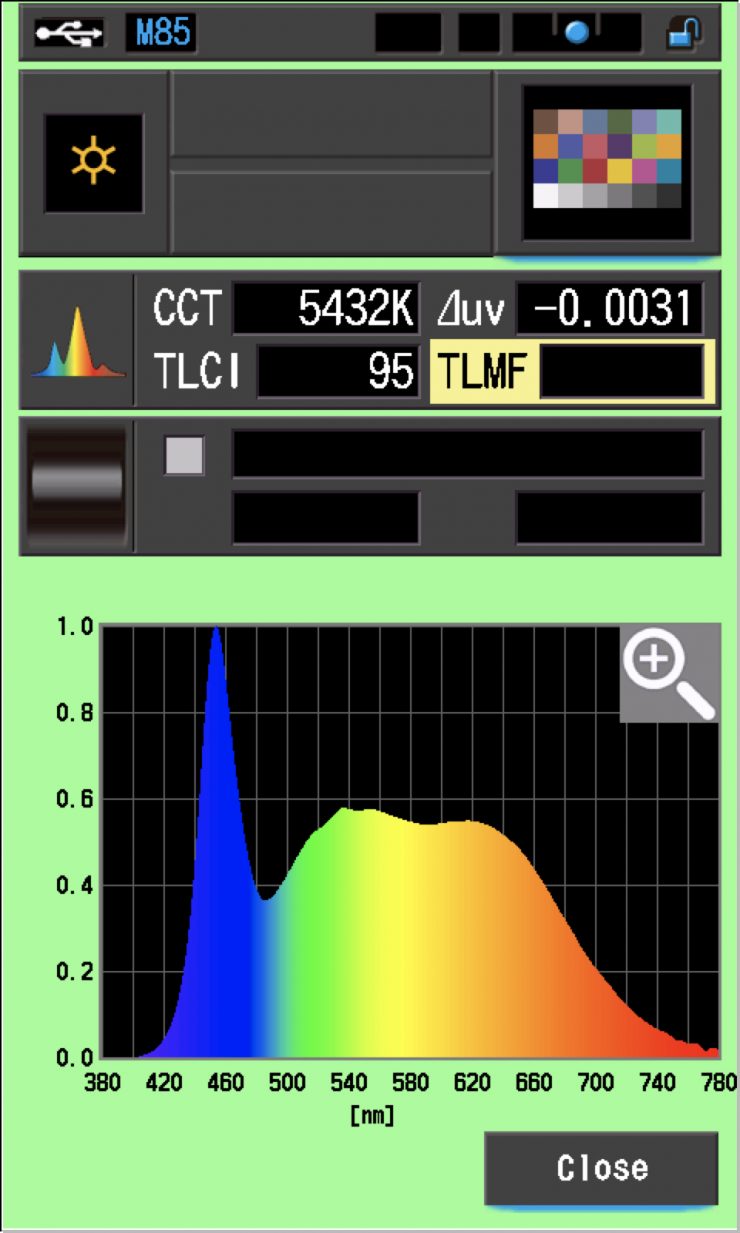
The light, when set at 5600K, recorded a TLCI score of 95.
3200K (standard reflector 65°)
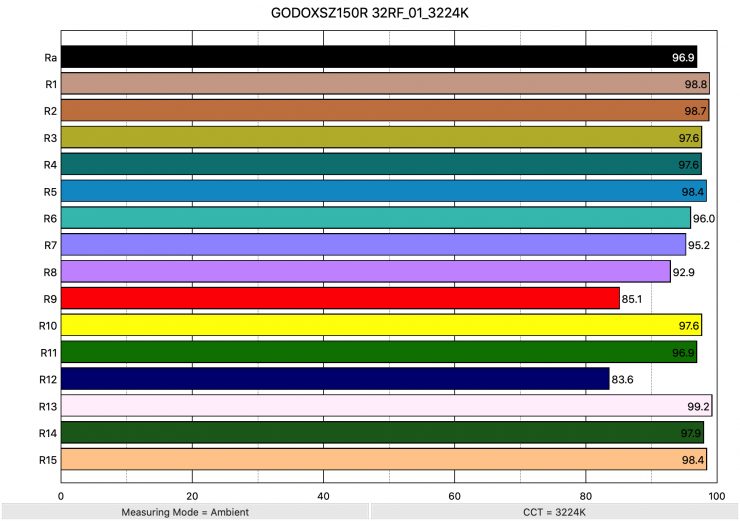
Above you can see the scores for when the light was used at 3200K. It recorded an average CRI (R1-R8) of 96.9 and an extended CRI (R1-R15) of 95.59. For replicating accurate skin tones it recorded 85.1 for R9 (red), 99.2 for R13 (closest to caucasian skin tones), and 98.4 for R15 (closest to Asian skin tones).
These results were fairly compabarable to when the light was used at 5600K.
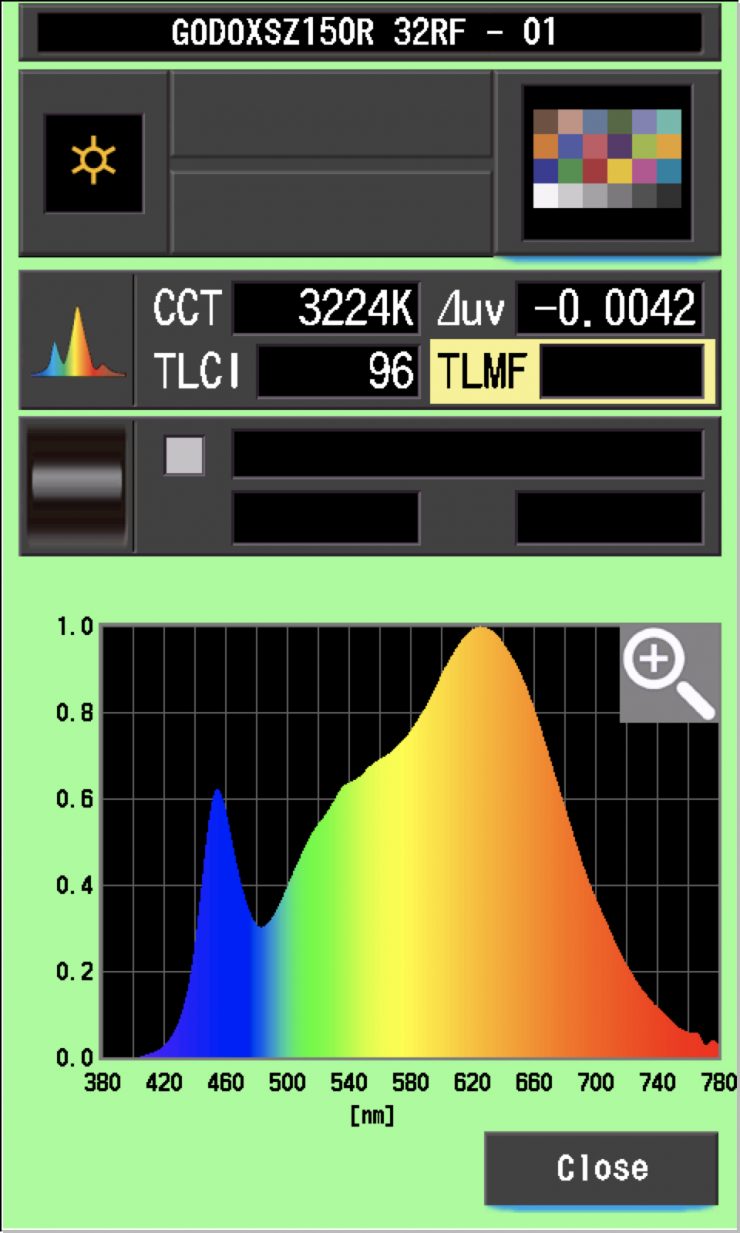
The light, when set at 3200K, recorded a TLCI score of 96.
Even though they are not really comparable, let’s see how the results from the Godox measure up at 3200K and 5600K when compared to the Aputure 300x and ARRI Orbiter that we have previously reviewed.
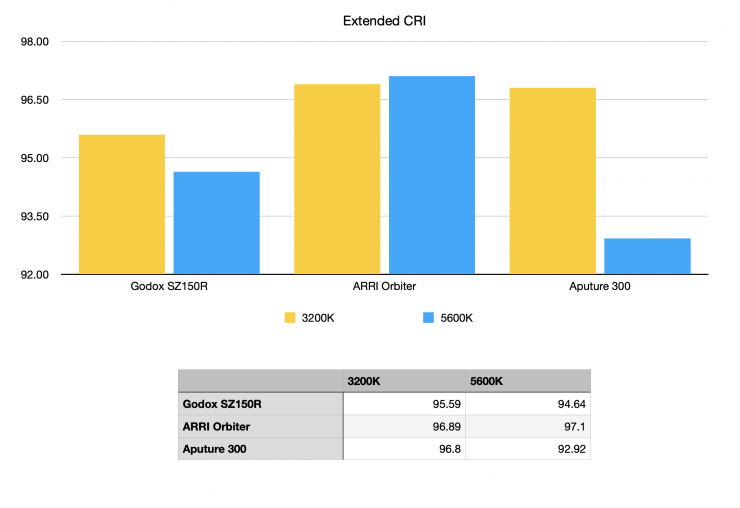
As you can see, the Godox’s color rendering scores are pretty good and the light certainly punches well above its weight.
CC Index & ⊿uv
The CC Index displays the CC correction value and whether any magenta or green need to be added or subtracted. 1 CC corresponds to 035 Kodak CC values or 1/8 Rosco filter values. Any reading less than +1.00 or -1.00 and you’re probably not going to need to make any kind of adjustment. The ⊿uv is the value to show how much this light is away from being an ideal light source (black body radiation = incandescent lamp). As with the CC Index you want this number to theoretically be zero. Kelvin is not a linear value, so we need to convert from Kelvin to MK-1 to compare the values of color temperature. To calculate from Kelvin to Mired is MK-1= 1*1000000/Kelvin. While this may sound confusing, it is the only way of measuring if the Kelvin shift is significant enough to warrant having to use a filter for correction. Below are the results for the Godox SZ150R:
Kelvin Vs MK-1
| Kelvin | Difference in K | MK-1 | Difference in MK-1 | |
| SET VALUE | 2800K | 0 | 357.14 | 0 |
| ACTUAL READING | 2742K | 58 | 364.69 | 7.55 MK-1 |
| SET VALUE | 3200K | 0 | 312.5 | 0 |
| ACTUAL READING | 3224K | 24 | 310.17 | -2.33 MK-1 |
| SET VALUE | 4500K | 0 | 222.22 | 0 |
| ACTUAL READING | 4440K | 60 | 225.22 | 3.00 MK-1 |
| SET VALUE | 5600K | 0 | 178.57 | 0 |
| ACTUAL READING | 5432K | 168 | 180.34 | 1.77 MK-1 |
| SET VALUE | 6500K | 0 | 153.84 | 0 |
| ACTUAL READING | 6291K | 209 | 158.95 | 5.11 MK-1 |
These figures might look confusing, but what it tells me is that the light is reasonably Kelvin color accurate at all temperatures. Any MK-1 score that is under -9/9 means you wouldn’t have to use any color correction gels. The MK-1 scores for this light were pretty good.
CC INDEX & ⊿uv
| CC INDEX | ⊿uv | |
| 2500K | 0 | 0.0007 |
| 3200K | 0.4G | -0.0042 |
| 4500K | 0.5G | -0.0054 |
| 5600K | 0.4G | -0.0031 |
| 6500K | 0.3G | -0.0007 |
The light certainly leans towards green at 3200-6500K, but this can easily be corrected.
TM-30
TM-30 is a relatively new color rendering standard that was developed to deal with the limitations of CRI. TM-30 looks at 99 individual colors. These 99 colors are categorized into seven groups: nature, skin color, textiles, paints, plastics, printed material, and color systems.
TM-30 scores go from 0 – 100. The higher the score, the more accurate a light is at producing colors. Any TM-30 Rf score in the ’90s is considered to be good. What is interesting and something that you need to be very aware of is that two separate light sources with the exact same CRI scores can render colors very differently. A light with a high CRI rating could have a low TM-30 score. Conversely, a light with a good TM-30 score could have a bad CRI score.
Now, there are two measurements associated with TM-30, Rf and Rg.
- Rf (Color Fidelity)
- Rg (Color Gamut)
With Rf value, ideally, you want a score in the 90’s.
With Rg value, a score below 100 indicates that the light source renders colors with less saturation than the reference source. So ideally you want this score to be above 100.
Above you can see the scores for the Godox SZ150R at various Kelvin color temperatures.
Here are the results:
| Rf | Rg | |
| 2800K | 94 | 100 |
| 3200K | 93 | 101 |
| 4500K | 92 | 101 |
| 5600K | 91 | 101 |
| 6500K | 90 | 99 |
SSI
SSI (Spectral Similarity Index) was developed by the Sci-Tech Council of the Academy. SSI gives me the ability to set any light as a standard, or use predefined standards (such as CIE D55), and then give other lights an SSI score based upon how well they will match standards such as CIE D55. This way I can measure spectral response and compare it directly against an ideal light source. This is actually a much better test than recording CRI scores.
3200K
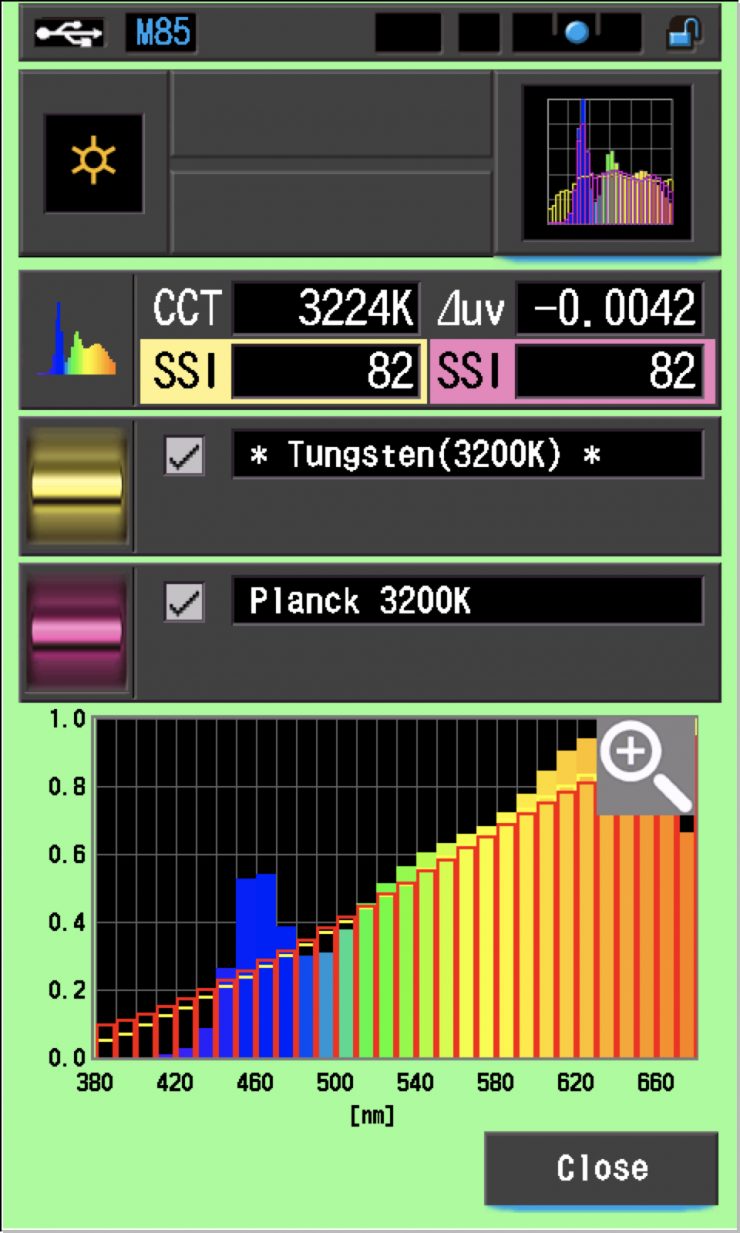
In this graph, the red bars indicate a perfect Planck 3200K source. The gold bars indicate a perfect 3200K Tungsten source. This lets us compare how close to a perfect 3200K lighting source the Godox SZ150R is. Any SSI score in the high 70’s, low ’80s is very good for a 3200K LED light. As you can see, LED lights have a hard time replicating colors below about 450nm.
5600K
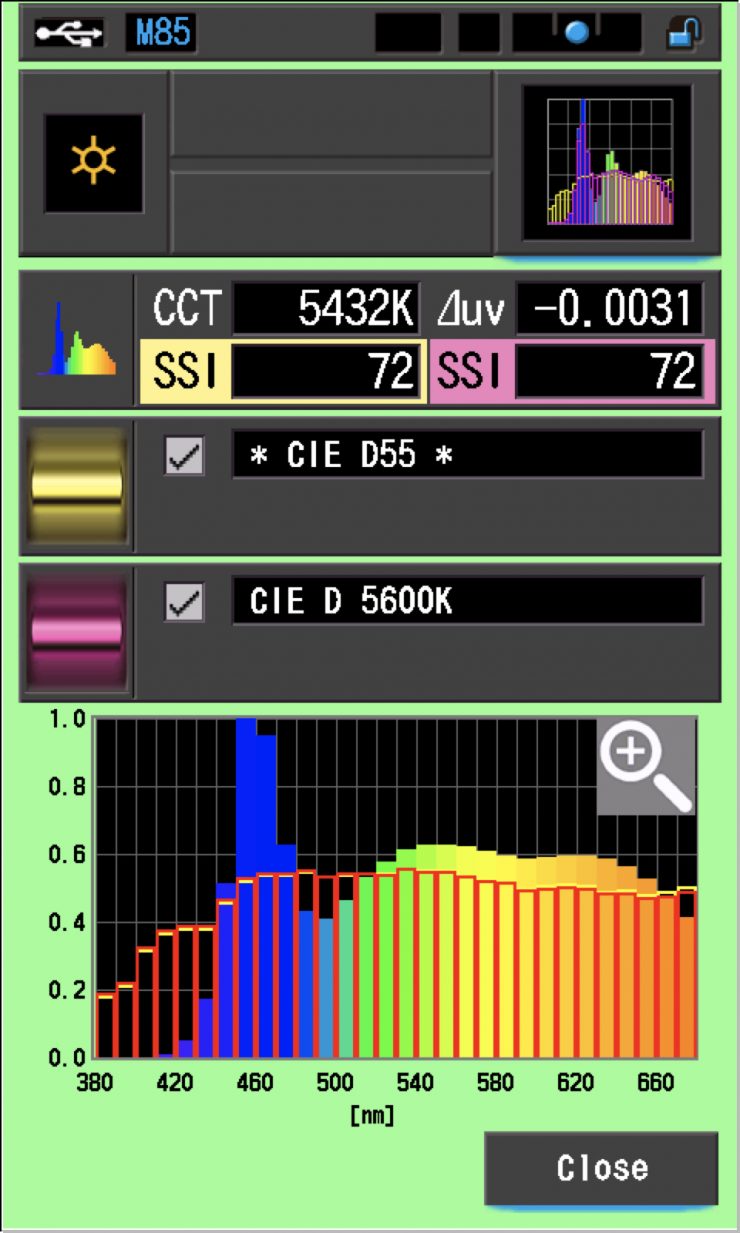
In the graph above the gold bars indicate a perfect CIE D55 source. The red bars indicate a perfect CIE D 5600K source. This lets us compare how close to a perfect 5600K lighting source the Godox SZ150R is. A score in the low 70’s is typical for a 5600K LED source.
The main reason we want to record SSI scores is so we can see how well they match with other lights. As an example, I wanted to see how well the Godox SZ150R matched the ARRI Orbiter and the Aputure 600d Pro. Below you can see the results.
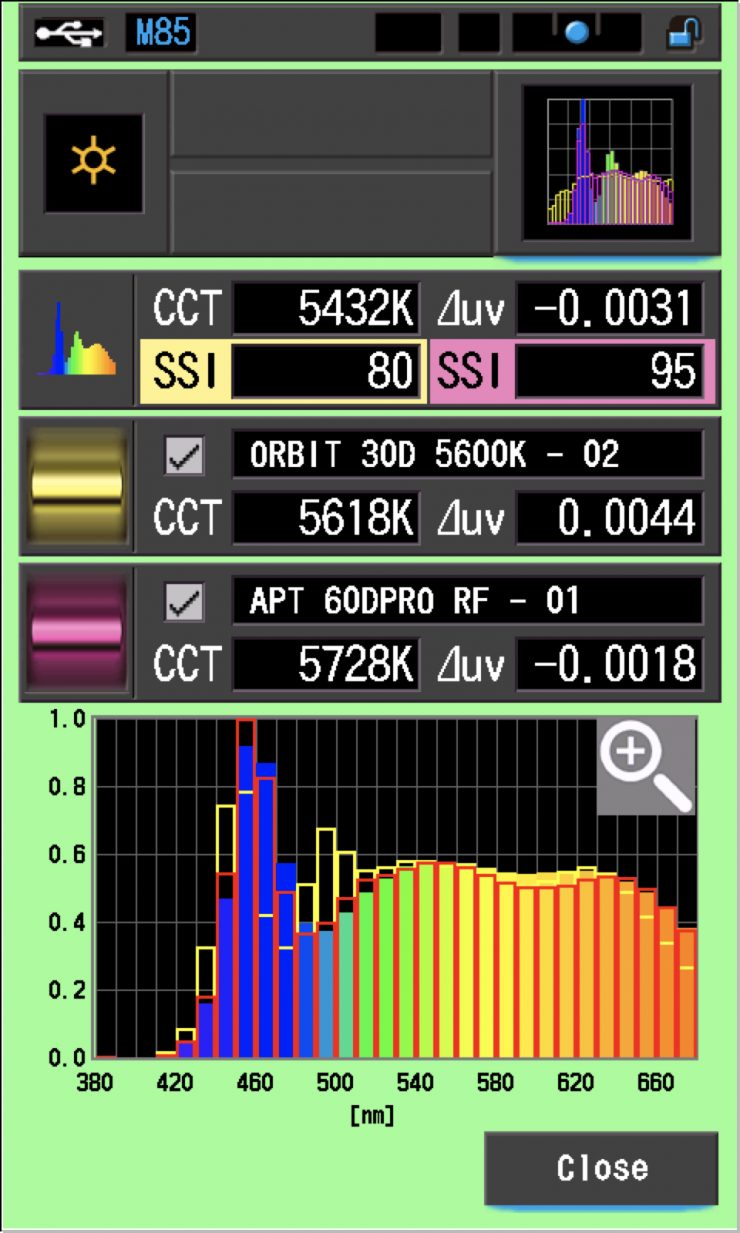
As you can see the Aputure 600d Pro matches up pretty well to the Godox. However, the Godox doesn’t really match up well with the ARRI.
SSI tests are a great way of telling you what lights you own or use will work well together.
Spectral Distribution
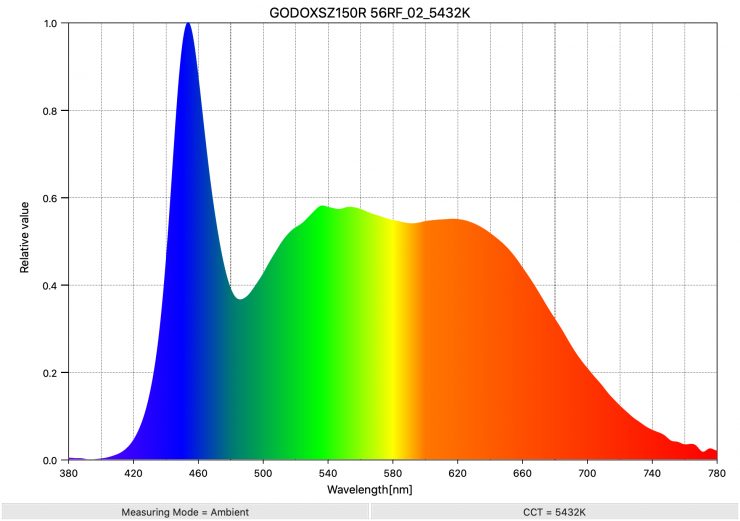
Above you can see the spectral distribution of the Godox SZ150R when it is set at 5600K. The spectral distribution is reasonably good and there aren’t any spikes where there shouldn’t be.
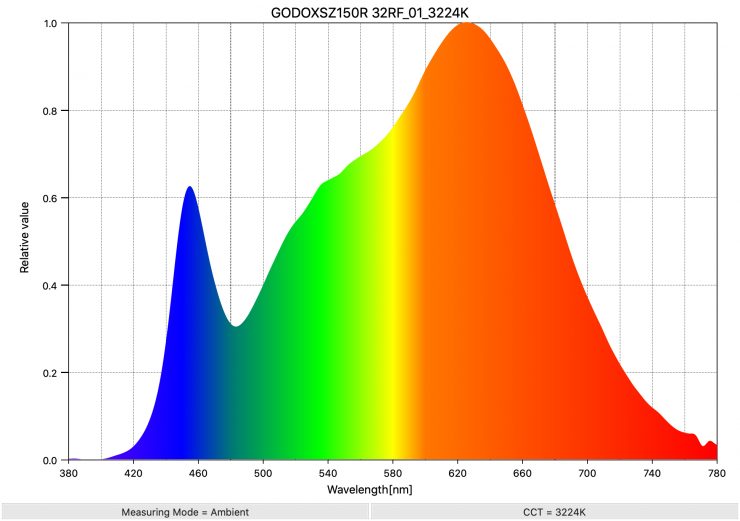
Above you can see the spectral distribution of the Godox when it is set at 3200K. Again, just like at 5600K, hhe spectral distribution is pretty good.
Accessories
As the Godox SZ150R uses a Bowens mount so you can attach a large range of affordable accessories and modifiers. If you own multiple lights that utilize a Bowens mount you can swap and switch around accessories.
Real-World Performance & Quality of Light
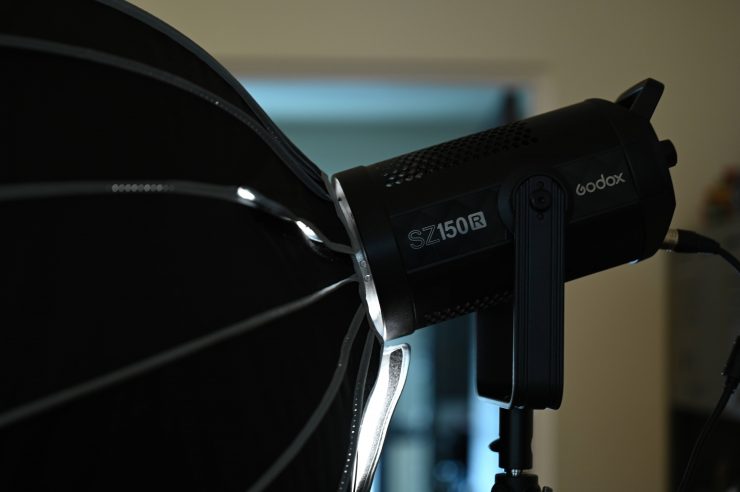
As I always say, photometric scores only tell you part of the story. So let’s find out if the scores from Godox SZ150R translate into good real-world performance.
The photometric data can only give me scientific data and it is much more important for me to see how the light looks and performs.
Unfortunately, it is very hard at the moment with the Coronavirus for me to showcase the strengths of the light. I live in Japan in an apartment so there isn’t a lot of space to do much testing. I apologize that I can’t do more!
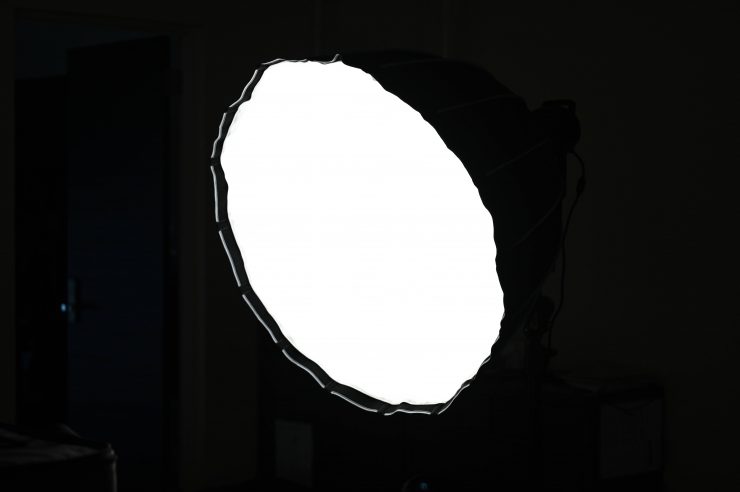
It is very easy to create a soft, flattering light source using the Godox by using modifiers. I found that by using a softbox you could create a very soft lighting source without needing to punch it through a diffusion screen. This makes it a very quick and easy light to use for interview situations or for any scenario where you need soft light.
Above you can see what the light looks like with a softbox being used. For these examples, the light was only set at 38% intensity.
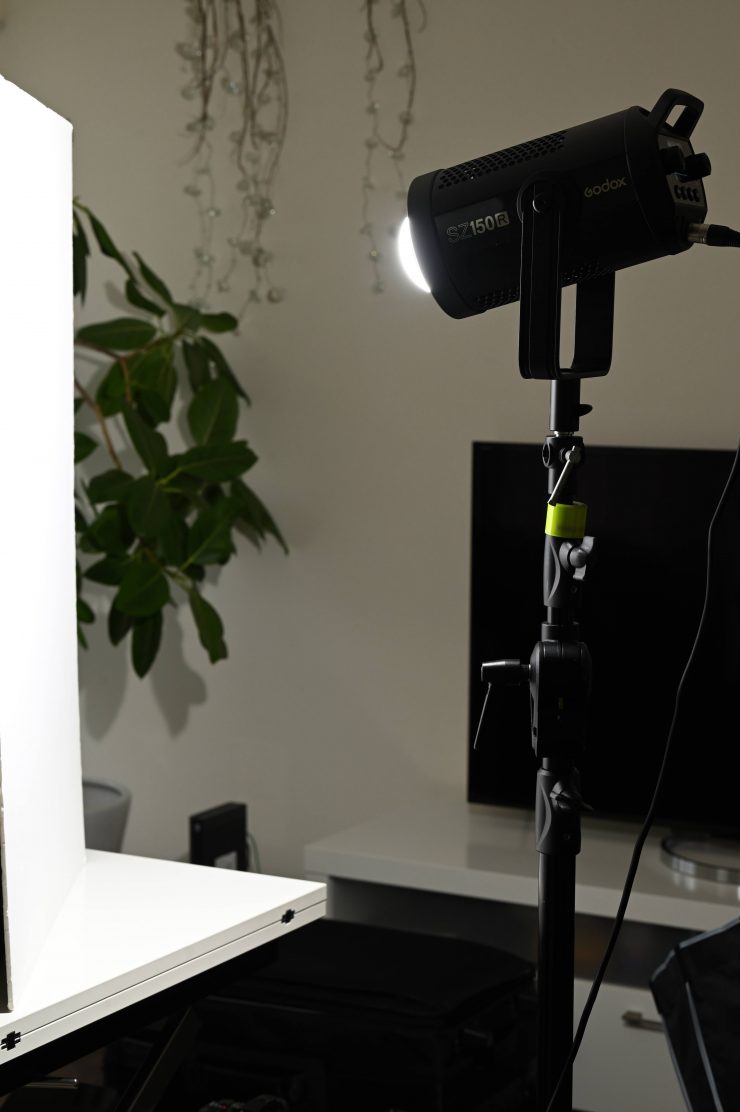
It also works well when you punch the light through a large diffusion screen or into some polyboard.
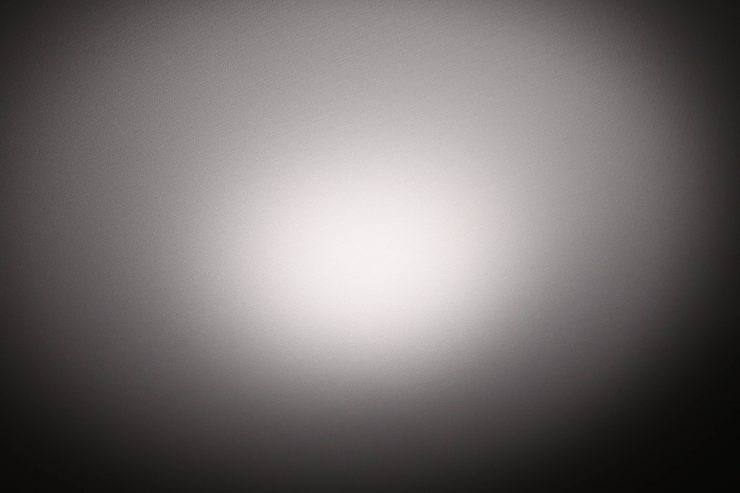
The light does have a hot spot in the middle which you can see above.
Who is the Godox SZ150R aimed at?
You could use the Godox SZ150R for lots of different applications, but the light is certainly being aimed at budget-conscious shooters who want a good quality COB fixture that won’t cost a fortune.
It is priced to appeal to owner-operators who are looking for a jack-of-all-trades lighting solution. The Godox SZ150R has the ability to be a hard light source or a soft source. There is a reason that COB lights such as this have become very popular with shooters and that is because of their versatility.
The Godox is likely to appeal to solo shooters and small crews who are looking for a similar light to some of the offerings from Aputure and other companies.
Price & Availability
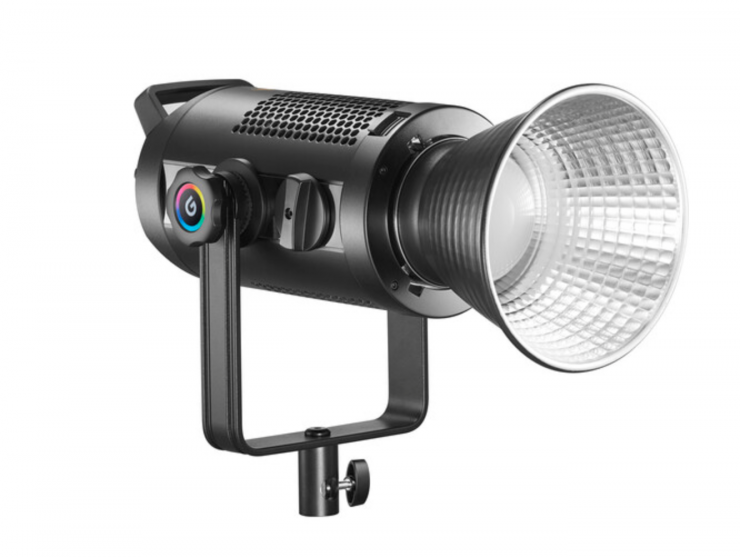
The Godox SZ150R retails for $559.00 USD. This makes it a very appealing prospect for those shooters who are looking for a light that offers features and functionality that are usually only found in much more expensive fixtures.
In the box you get:
- Godox Zoom RGB LED Video Light
- Lamp Cover
- Wire Rope
- Standard Reflector
- Power Cable
- Power Adapter
- Toggle Clip
- Fixed Base
- Carry Case
- Limited 1-Year B&H Warranty
Below you can see how the price compares to some of the competition:
There actually isn’t a ton of options out there if you are comparing 150W RGB COB fixtures.
Conclusion
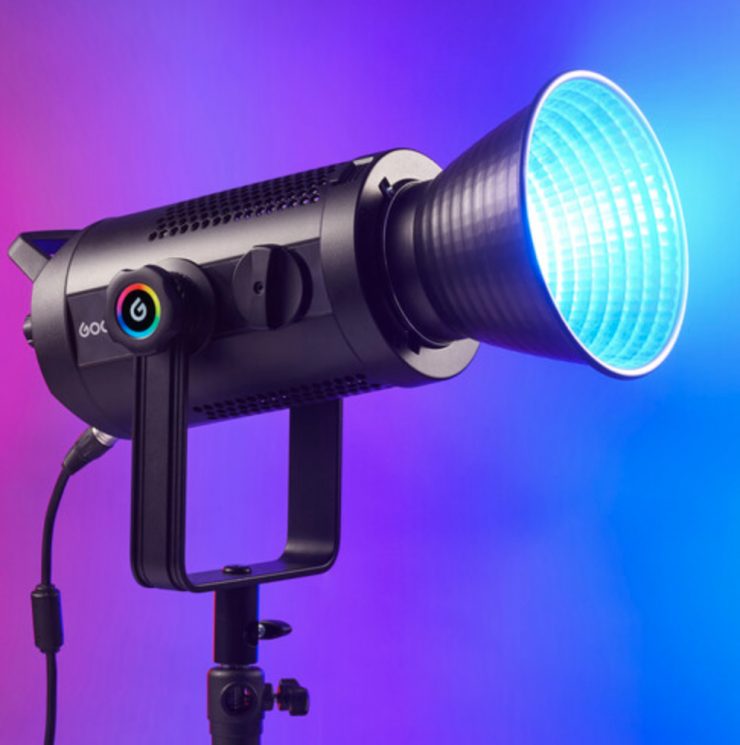
The Godox SZ150R is a decent fixture, and it certainly punches well above its weight.
It is versatile, has a good amount of output, and it produces a really nice quality of light.
The interface and operating system are reasonably straightforward and easy to use, as is the app. By utilizing a Bowens Mount you can utilize a large array of lighting modifiers without having to spend a ton of money.
The only real downside to the light is the fan noise. I personally found it too loud to use in environments where audio needed to be recorded within a few meters of where the fixture was placed. Yes, you can turn the fan off, but then you are limited to just 35% output.
With a lot of modern LED lights, the quality of the LEDs being used is very similar, even across the price spectrum. What separates the lights comes down to build quality, features, and usability.
The Godox may not be as well made or built as a lot of other fixtures, but it is still decent considering how much it costs. It is easy to see why Godox fixtures are pretty popular amongst shooters.
In my opinion, the light is priced well given its feature set, output, and capabilities. As a low-cost alternative to other RGB COB fixtures, it certainly ticks a lot of boxes.
Like what we do and want to support Newsshooter? Consider becoming a Patreon supporter and help us to continue being the best source of news and reviews for professional tools for the independent filmmaker.

